

| Firma : Azamara Cruises |
| Statek : Azamara Journey |
| Data rozpoczęcia : śr. 07 lip 2027 |
| Data zakończenia : czw. 09 wrz 2027 |
| Liczba nocy : 64 nocy |
| Dzień | Data | Port | Wypłynięcie | Odpłynięcie |
|---|---|---|---|---|
| 1 | 7.07 śr. | Portsmouth / Dominica | 18:00 | |
| 2 | 8.07 czw. | Dzień na morzu / Morze | ||
| 3 | 9.07 pt. | Liverpool | 07:00 | 22:00 |
| 4 | 10.07 sob. | Dublin / Irlandia | 08:00 | |
| 5 | 11.07 niedz. | Dublin / Irlandia | 18:00 | |
| 6 | 12.07 pon. | Greenock / Scotland | 07:30 | 21:00 |
| 7 | 13.07 wt. | Douglas / Maine Island | 08:00 | 18:00 |
| 8 | 14.07 śr. | Dzień na morzu / Morze | ||
| 9 | 15.07 czw. | Invergordon / Wielka Brytania | 07:30 | 20:00 |
| 10 | 16.07 pt. | Aberdeen / Wielka Brytania | 07:30 | 19:00 |
| 11 | 17.07 sob. | Dundee / Wielka Brytania | 02:13 | |
| 12 | 18.07 niedz. | Dundee / Wielka Brytania | 23:30 | |
| 13 | 19.07 pon. | Leith, Edynburg / Wielka Brytania | 16:30 | |
| 14 | 20.07 wt. | Leith, Edynburg / Wielka Brytania | 08:00 | 21:00 |
| 15 | 21.07 śr. | Dzień na morzu / Morze | ||
| 16 | 22.07 czw. | Rosendal / Norway | 08:00 | 17:00 |
| 17 | 23.07 pt. | Olden / Norway | 09:00 | 20:00 |
| 18 | 24.07 sob. | Olesunn / Norway | 08:00 | 22:00 |
| 19 | 25.07 niedz. | Dzień na morzu / Morze | ||
| 20 | 26.07 pon. | Svolvaer / Norway | 07:00 | 17:00 |
| 21 | 27.07 wt. | FJORD TROLL | 18:30 | 19:00 |
| 22 | 28.07 śr. | Tromsø / Norway | 09:00 | 22:00 |
| 23 | 29.07 czw. | Honninsvog / Norway | 14:00 | 20:00 |
| 24 | 30.07 pt. | Honninsvog / Norway | 23:58 | |
| 25 | 31.07 sob. | Alta / Norway | 09:00 | 17:00 |
| 26 | 1.08 niedz. | Harstad / Norway | 10:00 | 22:00 |
| 27 | 2.08 pon. | Bodo / Norway | 07:00 | 17:00 |
| 28 | 3.08 wt. | Trondheim / Norway | 13:30 | 22:00 |
| 29 | 4.08 śr. | Kristiansand / Norway | 08:00 | 20:00 |
| 30 | 5.08 czw. | Dzień na morzu / Morze | ||
| 31 | 6.08 pt. | Arendal / Norway | 08:00 | 22:00 |
| 32 | 7.08 sob. | Skagen / Denmark | 08:00 | 17:00 |
| 33 | 8.08 niedz. | Kopenhaga / Denmark | 06:00 | 17:00 |
| 34 | 9.08 pon. | Visby / Sweden | 13:30 | 20:00 |
| 35 | 10.08 wt. | Sztokholm / Sweden | 08:00 | |
| 36 | 11.08 śr. | Sztokholm / Sweden | 15:00 | |
| 37 | 12.08 czw. | Helsinki / Finland | 08:00 | 22:00 |
| 38 | 13.08 pt. | Tallinn / Estonia | 08:00 | 22:00 |
| 39 | 14.08 sob. | Dzień na morzu / Morze | ||
| 40 | 15.08 niedz. | Ryga / Łotwa | 07:00 | 18:00 |
| 41 | 16.08 pon. | Kłajpeda (Memel) / Litwa | 13:00 | 22:00 |
| 42 | 17.08 wt. | Gdańsk / Polska | 07:30 | 21:00 |
| 43 | 18.08 śr. | Ronne / Denmark | 11:00 | 20:00 |
| 44 | 19.08 czw. | Kopenhaga / Denmark | 06:00 | 17:00 |
| 45 | 20.08 pt. | Gothenburg / Sweden | 08:00 | 17:00 |
| 46 | 21.08 sob. | Dzień na morzu / Morze | ||
| 47 | 22.08 niedz. | Leith, Edynburg / Wielka Brytania | 05:00 | |
| 48 | 23.08 pon. | Leith, Edynburg / Wielka Brytania | 16:00 | |
| 49 | 24.08 wt. | Dundee / Wielka Brytania | 05:45 | |
| 50 | 25.08 śr. | Aberdeen / Wielka Brytania | 09:30 | 22:00 |
| 51 | 26.08 czw. | Dundee / Wielka Brytania | 02:00 | |
| 52 | 27.08 pt. | Invergordon / Wielka Brytania | 08:00 | 20:00 |
| 53 | 28.08 sob. | Dzień na morzu / Morze | ||
| 54 | 29.08 niedz. | Oban / Wielka Brytania | 08:00 | 18:00 |
| 55 | 30.08 pon. | Greenock / Scotland | 07:30 | 20:00 |
| 56 | 31.08 wt. | Douglas / Maine Island | 08:00 | 17:00 |
| 57 | 1.09 śr. | Dublin / Irlandia | 06:00 | |
| 58 | 2.09 czw. | Dublin / Irlandia | 18:00 | |
| 59 | 3.09 pt. | Cobh / Irlandia | 07:30 | 20:00 |
| 60 | 4.09 sob. | PRZYSTAŃ BANTRY | 08:00 | 18:00 |
| 61 | 5.09 niedz. | Foynes, Limerick / Irlandia | 07:00 | 20:00 |
| 62 | 6.09 pon. | Galway / Irlandia | 08:00 | 18:00 |
| 63 | 7.09 wt. | Donegal | 07:30 | 18:00 |
| 64 | 8.09 śr. | Belfast / Wielka Brytania | 09:00 | |
| 65 | 9.09 czw. | Belfast / Wielka Brytania | 20:00 | |
| 66 | 10.09 pt. | Dzień na morzu / Morze | ||
| 67 | 11.09 sob. | Ceniłem | 08:00 | 18:00 |
| 68 | 12.09 niedz. | Portsmouth / Dominica | 06:00 |



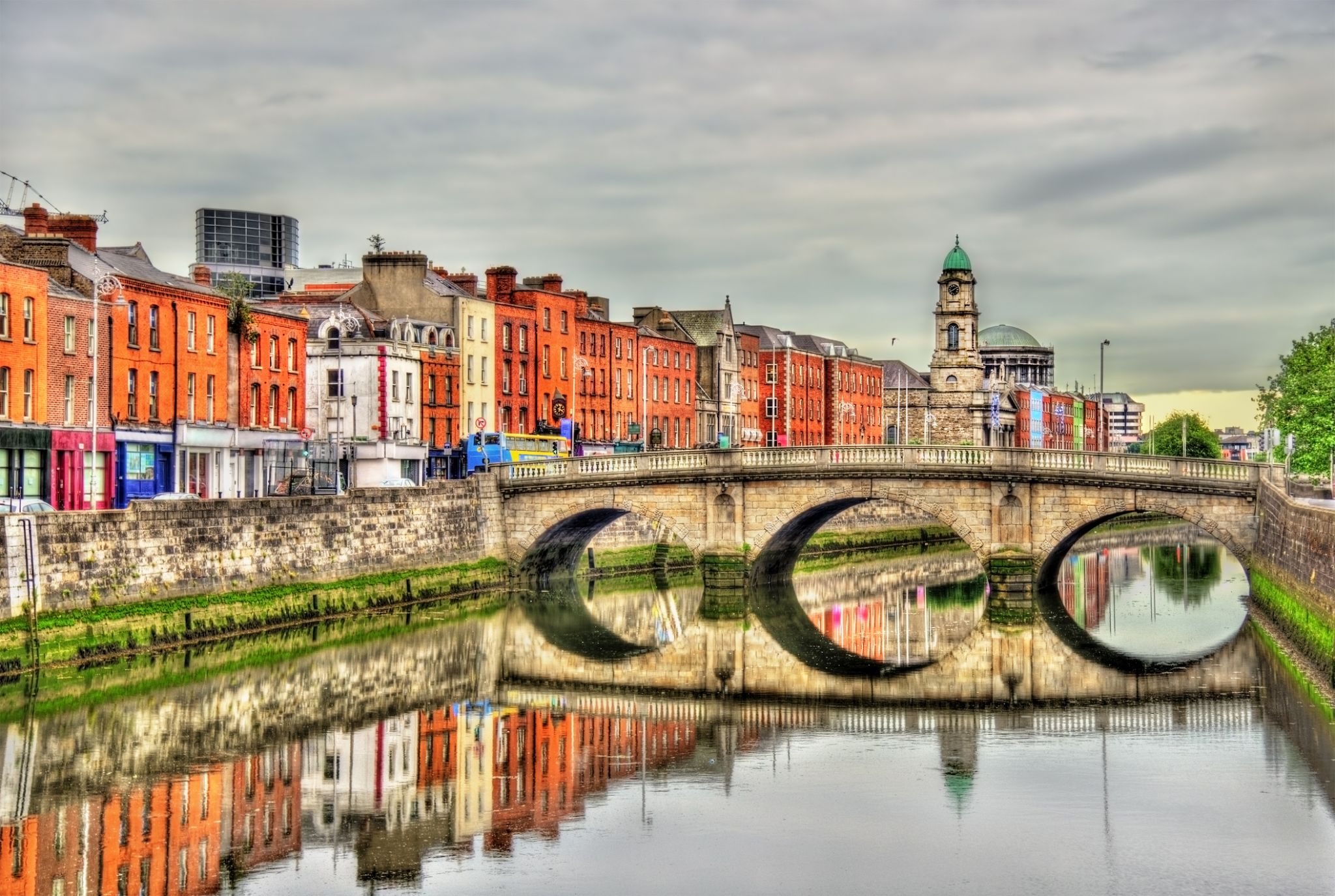
Dublin is the capital of, and largest city in, Ireland. It is on the east coast of Ireland, in the province of Leinster, at the mouth of the River Liffey, and is bordered on the south by the Wicklow mountains. It has an urban area population of 1,173,179, while the population of the Dublin Region (formerly County Dublin), as of 2016, was 1,347,359, and the population of the Greater Dublin area was 1,904,806.
There is archaeological debate regarding precisely where Dublin was established by Celtic-speaking people in the 7th century AD. Later expanded as a Viking settlement, the Kingdom of Dublin, the city became Ireland's principal settlement following the Norman invasion. The city expanded rapidly from the 17th century and was briefly the second largest city in the British Empire before the Acts of Union in 1800. Following the partition of Ireland in 1922, Dublin became the capital of the Irish Free State, later renamed Ireland.
Dublin is a historical and contemporary centre for education, the arts, administration and industry. As of 2018 the city was listed by the Globalization and World Cities Research Network (GaWC) as a global city, with a ranking of "Alpha -", which places it amongst the top thirty cities in the world.

Dublin is the capital of, and largest city in, Ireland. It is on the east coast of Ireland, in the province of Leinster, at the mouth of the River Liffey, and is bordered on the south by the Wicklow mountains. It has an urban area population of 1,173,179, while the population of the Dublin Region (formerly County Dublin), as of 2016, was 1,347,359, and the population of the Greater Dublin area was 1,904,806.
There is archaeological debate regarding precisely where Dublin was established by Celtic-speaking people in the 7th century AD. Later expanded as a Viking settlement, the Kingdom of Dublin, the city became Ireland's principal settlement following the Norman invasion. The city expanded rapidly from the 17th century and was briefly the second largest city in the British Empire before the Acts of Union in 1800. Following the partition of Ireland in 1922, Dublin became the capital of the Irish Free State, later renamed Ireland.
Dublin is a historical and contemporary centre for education, the arts, administration and industry. As of 2018 the city was listed by the Globalization and World Cities Research Network (GaWC) as a global city, with a ranking of "Alpha -", which places it amongst the top thirty cities in the world.
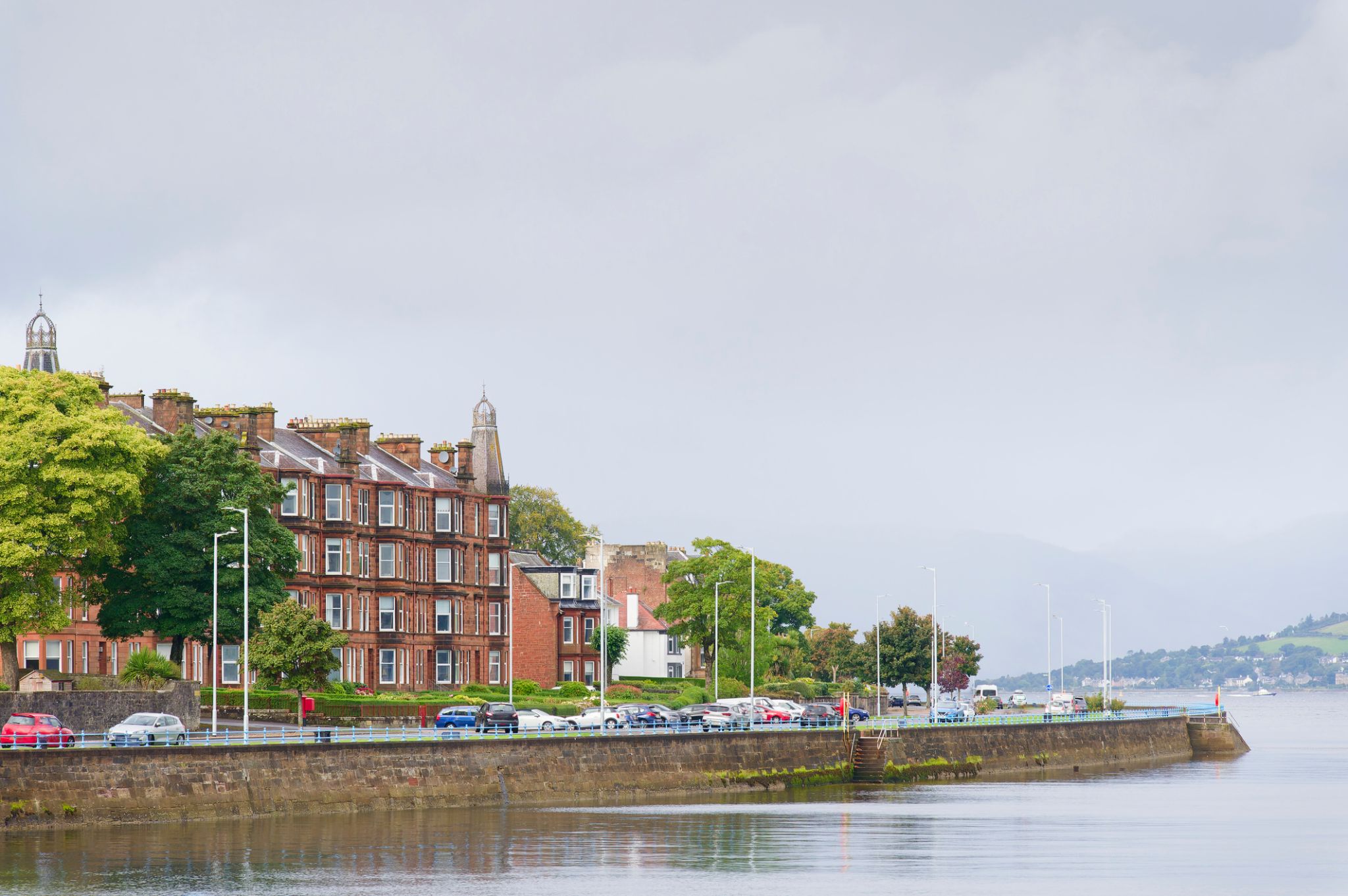
Greenock to miasto w Szkocji, położone na południowo-zachodnim wybrzeżu, 32 kilometry na zachód od Glasgow. Greenock zostało założone jako port, a jego historyczne znaczenie związane jest z rozwojem przemysłu stoczniowego i handlu. Przez wiele lat było ważnym centrum żeglugi, a dziś miasto nadal pełni rolę istotnego węzła transportowego, z dużym portem i nowoczesną infrastrukturą. Greenock słynie również ze swoich historycznych budowli, takich jak latarnia morska w Greenock, a w pobliżu można zobaczyć muzeum żeglugi oraz wiele starych magazynów, które zachowały atmosferę minionych czasów.
Dla turystów Greenock to malownicze miejsce do spacerów wzdłuż nabrzeża i w parkach, a także doskonałe miejsce do poznania historii szkockiego żeglarstwa. Miasto stało się także popularnym miejscem dla podróżnych na statkach wycieczkowych, ponieważ jego port zapewnia dostęp do najpiękniejszych części zachodniego wybrzeża kraju. W okolicach miasta znajduje się wiele naturalnych atrakcji, w tym pobliskie wyspy oraz piękne plaże, gdzie można odpocząć i podziwiać widoki na morze i wybrzeże.
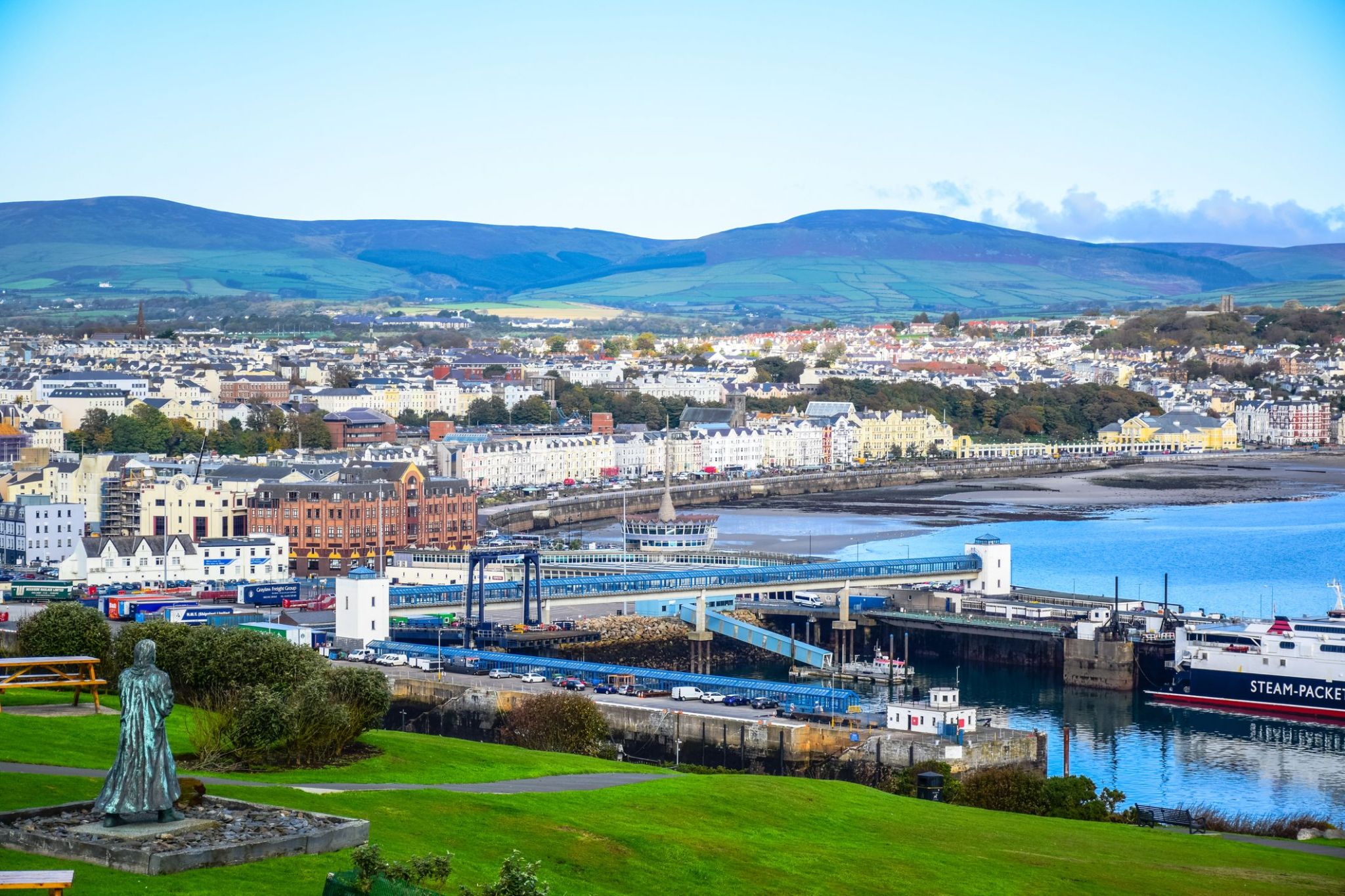
Douglas to stolica i największe miasto Wyspy Man, położone w Morzu Irlandzkim. Miasto, które ma bogatą historię morską, jest znane z malowniczych krajobrazów wybrzeża oraz przytulnej atmosfery. W Douglasie można spacerować po historycznej promenadzie, gdzie znajdują się zabytkowe budynki i nowoczesne kawiarnie, a także odwiedzić lokalne muzeum, które opowiada o morskiej kulturze i tradycjach wyspy. Miasto jest również znane z architektonicznych zabytków, takich jak zamek i historyczne budynki wiktoriańskie, które nadają mu wyjątkowy urok.
Okolice Douglas oferują doskonałe możliwości do aktywnego wypoczynku, w tym wędrówki, spacery wzdłuż wybrzeża i wycieczki rowerowe. Wyspa Man słynie z unikalnej przyrody, a turyści mogą podziwiać widoki na wzgórza, malownicze zatoki i tradycyjne wioski. Ten zakątek Wielkiej Brytanii przyciąga turystów swoją unikalną kulturą, starodawnymi tradycjami oraz pięknymi naturalnymi krajobrazami, co sprawia, że jest to idealne miejsce na relaksujący wypoczynek i ekscytujące podróże.

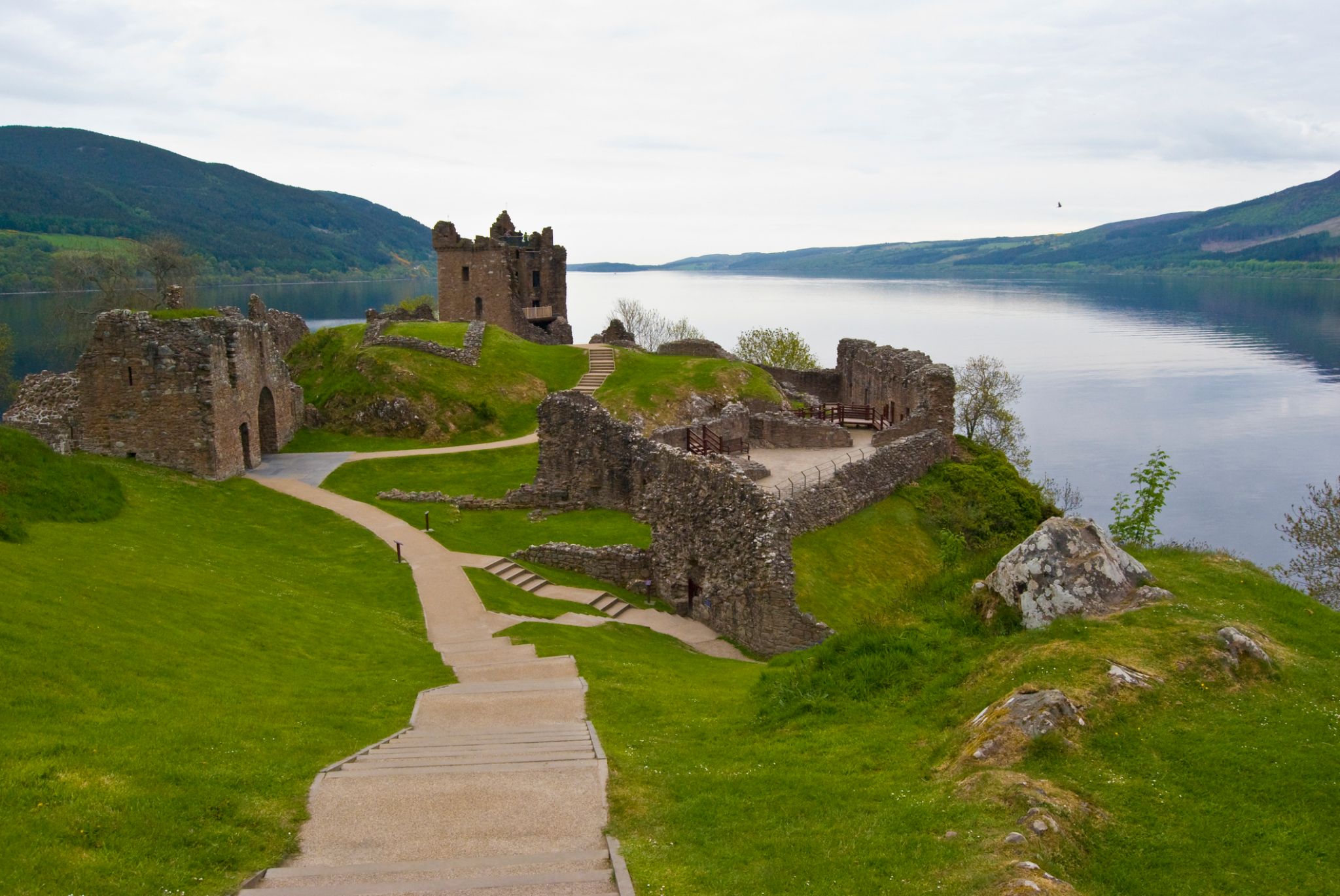
The town is well known for the Invergordon Mutiny of 1931. More recently it has also become known for the repair of oil rigs which line up in the Cromarty Firth on which the town is situated. In the 1970s and 1980s nearby Nigg was known for the construction of these rigs. The yard used for this is now attempting to re-establish itself as a fabricator of large offshore wind turbines and oil rig refurbishment since being purchased by Global Energy Group.
For a number of years Invergordon was the site of an aluminium smelter until 1981 when British Aluminium closed it down. The pipeline that covered the conveyor belt from the smelter to the BA pier was not dismantled until the early 2000s and the two large tanks still stand today as well as a water tower.
It still has a grain whisky distillery, operated by Philippines-owned whisky giant Whyte and Mackay, the output of which contributes to many blended whiskies. Connected to the distillery was the Invergordon Distillery Pipe Band.
At present the port is visited by many large cruise liners each year, as the deep water port allows disembarkation for coach tours in the northern Highlands.
Since the 1970s some would perceive the town as a 'Glasgow colony', since many workers were recruited from southern Scotland to work in the oil rig fabrication and aluminium smelting industries. As a result, the residents' accents often show more influence from Glasgow, than the surrounding Easter Ross dialect of Highland Englishalthough this has changed in recent years.
In recent years Global Energy Group have been expanding, with the purchase of the Nigg fabrication yard it has also brought much appreciated work to Invergordon's Docks with the town again full of oil company workers through the day.
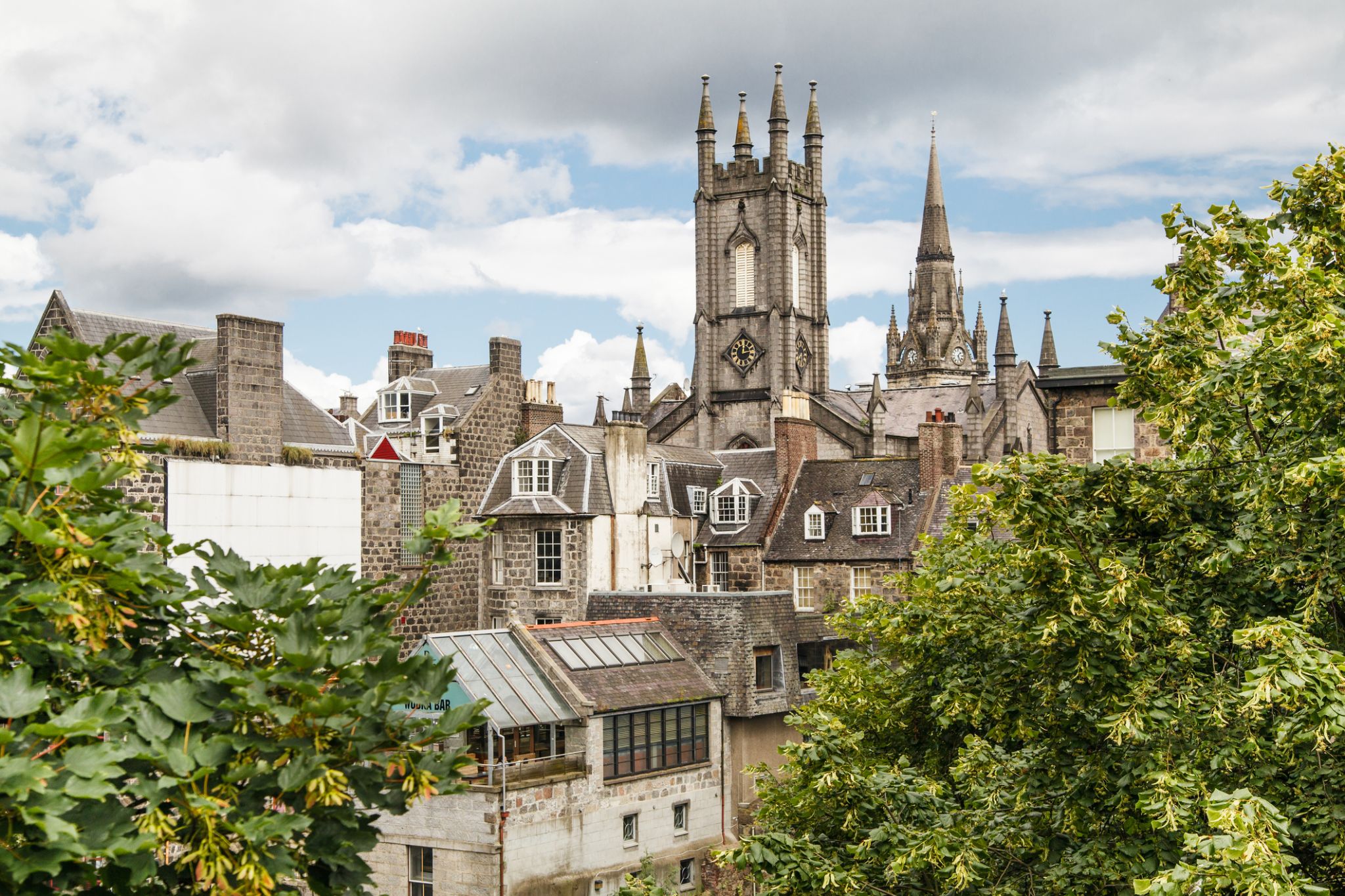
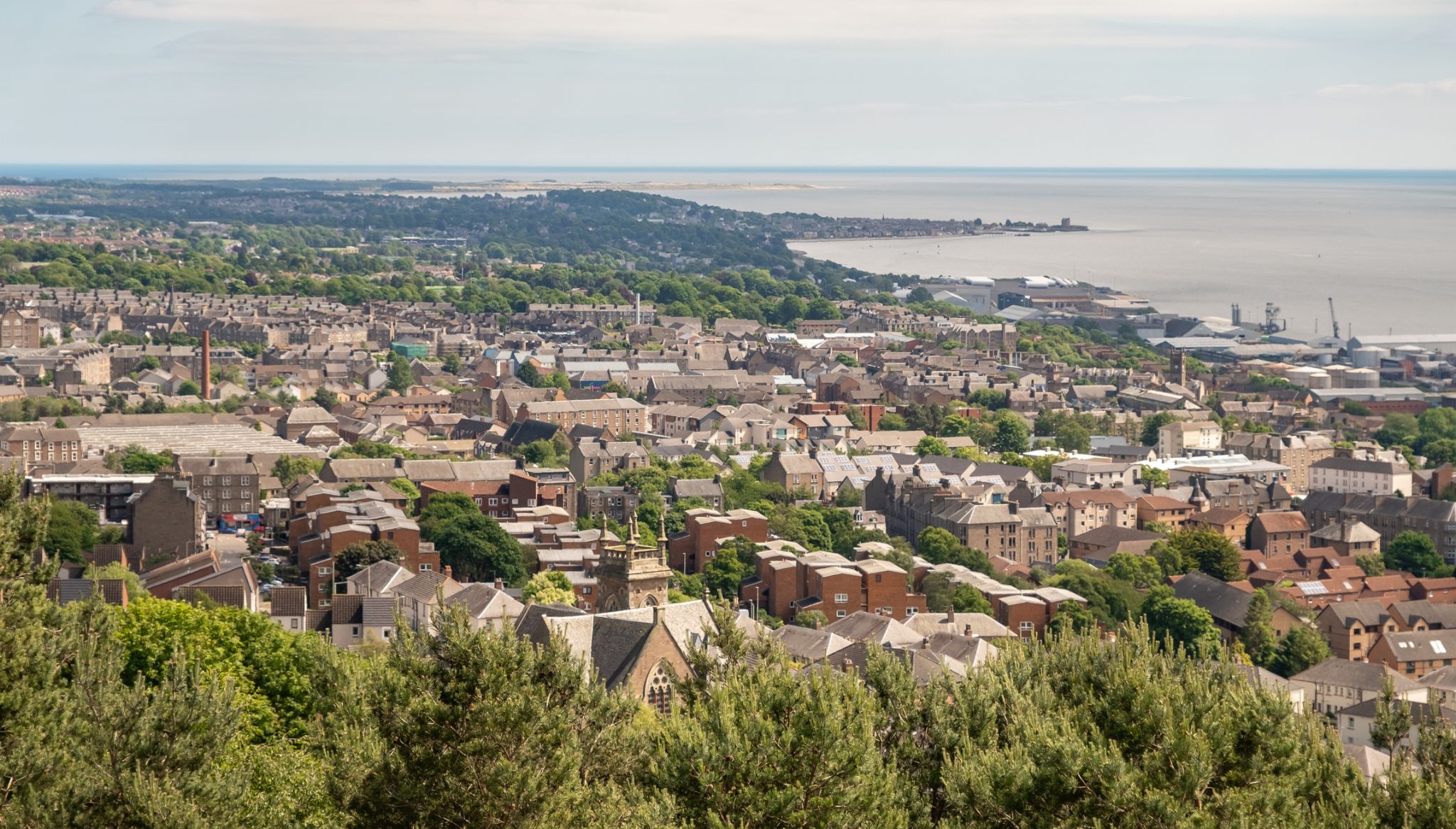

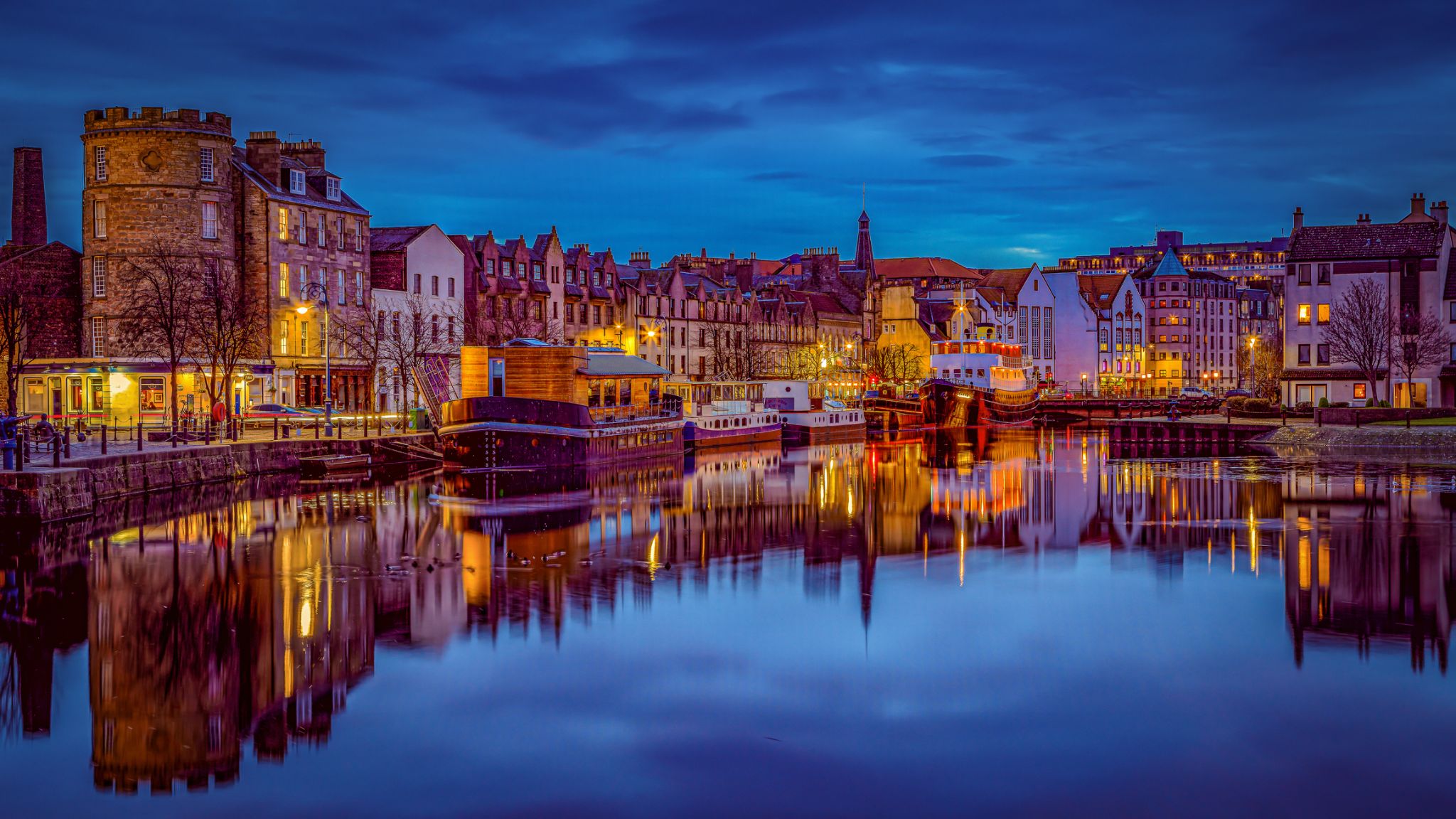
Leith is an area to the north of the city of Edinburgh, Scotland, at the mouth of the Water of Leith.
The earliest surviving historical references are in the royal charter authorising the construction of Holyrood Abbey in 1128. The medieval settlements of Leith had grown into a burgh by 1833, and the burgh was merged into Edinburgh in 1920.
Historically part of the county of Midlothian, Leith is sited on the coast of the Firth of Forth and lies within the council area of the City of Edinburgh.
The port remains one of its most valuable enterprises, handling over 1.5 million tonnes of cargo in 2003.
Previous to the bridge being built in the late 15th century, Leith had settlements on either side of the river, lacking an easy crossing.
South Leith was larger and was controlled by the lairds of Restalrig: the Logan family. It was based on trade and had many merchants' houses and warehouses. This was where ships offloaded their cargoes at The Shore where they were collected by Edinburgh merchants. Leithers were explicitly forbidden by statute to participate directly in the trade at the port, to ensure that landed goods were not sold elsewhere.
North Leith was smaller but proportionately richer, coming under the jurisdiction of Holyrood Abbey. It was effectively a fishing village consisting of one street, now Sandport Street and Quayside Lane. Burgage plots ran down to the river from each house.[6] This has traditionally been the shipbuilding side of Leith with several wet and dry docks built over time. The first dry dock in Scotland was built here in 1720. A small peninsula of land on the east bank also came under the same jurisdiction on what is now Sheriff Brae/Sheriff Bank.
The first bridge to link both banks of the river was built in 1493 by Abbot Bellenden, who controlled the church at North Leith. The bridge was a toll bridge, the revenue supplementing the church's income. Reputedly Leith's oldest building, it was demolished in 1780 to allow ships to sail further upstream.

Leith is an area to the north of the city of Edinburgh, Scotland, at the mouth of the Water of Leith.
The earliest surviving historical references are in the royal charter authorising the construction of Holyrood Abbey in 1128. The medieval settlements of Leith had grown into a burgh by 1833, and the burgh was merged into Edinburgh in 1920.
Historically part of the county of Midlothian, Leith is sited on the coast of the Firth of Forth and lies within the council area of the City of Edinburgh.
The port remains one of its most valuable enterprises, handling over 1.5 million tonnes of cargo in 2003.
Previous to the bridge being built in the late 15th century, Leith had settlements on either side of the river, lacking an easy crossing.
South Leith was larger and was controlled by the lairds of Restalrig: the Logan family. It was based on trade and had many merchants' houses and warehouses. This was where ships offloaded their cargoes at The Shore where they were collected by Edinburgh merchants. Leithers were explicitly forbidden by statute to participate directly in the trade at the port, to ensure that landed goods were not sold elsewhere.
North Leith was smaller but proportionately richer, coming under the jurisdiction of Holyrood Abbey. It was effectively a fishing village consisting of one street, now Sandport Street and Quayside Lane. Burgage plots ran down to the river from each house.[6] This has traditionally been the shipbuilding side of Leith with several wet and dry docks built over time. The first dry dock in Scotland was built here in 1720. A small peninsula of land on the east bank also came under the same jurisdiction on what is now Sheriff Brae/Sheriff Bank.
The first bridge to link both banks of the river was built in 1493 by Abbot Bellenden, who controlled the church at North Leith. The bridge was a toll bridge, the revenue supplementing the church's income. Reputedly Leith's oldest building, it was demolished in 1780 to allow ships to sail further upstream.


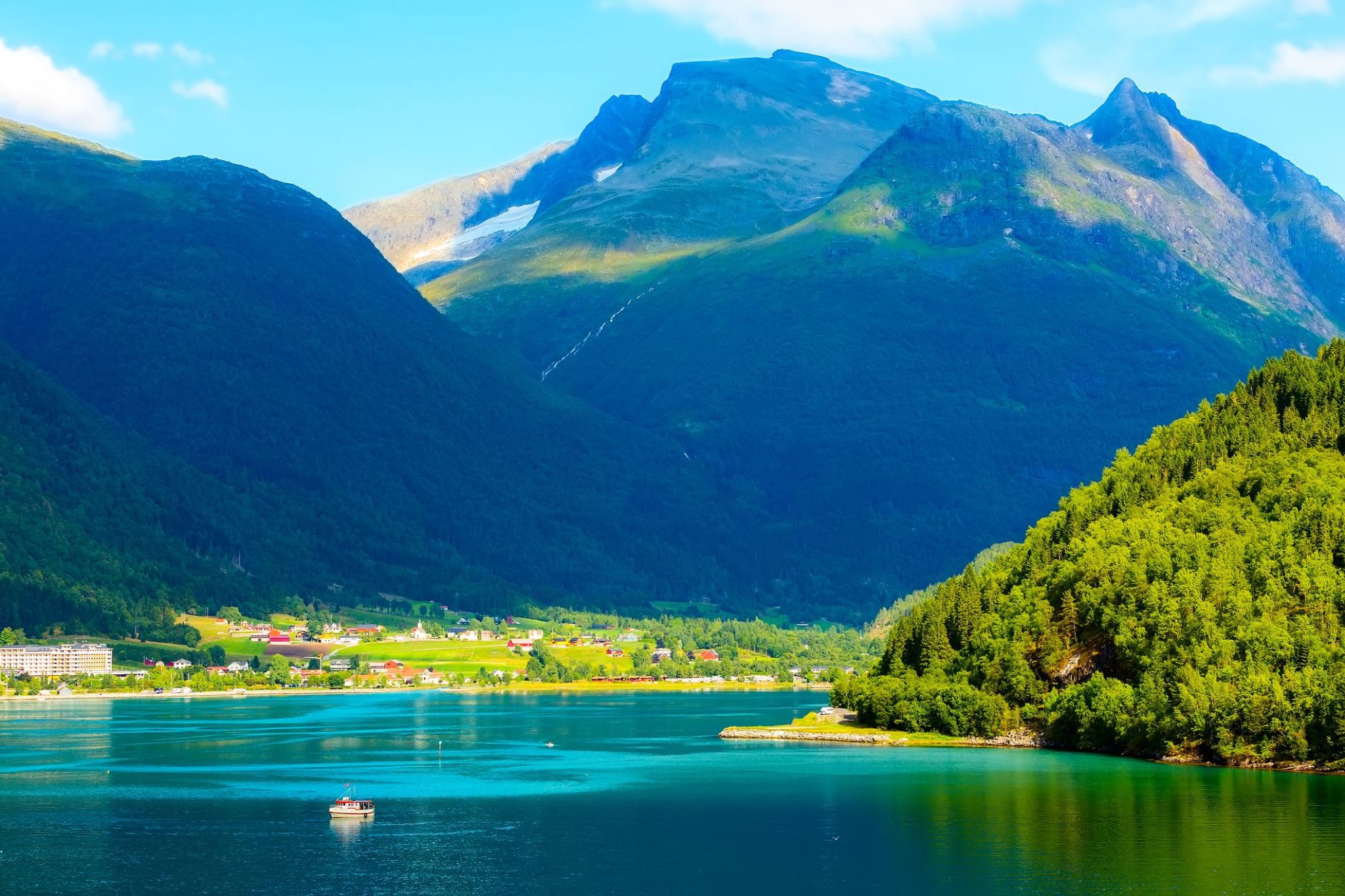
Delikatna poranna mgła i lustro wody witają podróżników w Olden, odsłaniając widoki na lodowce i szmaragdowe doliny, które wyglądają jak malowane przez naturę dla niespiesznych spacerów. Ta mała norweska miejscowość nad Nordfjordem oferuje rzadkie poczucie odosobnienia, gdy szum wodospadów i krzyki mew stają się jedynymi dźwiękami wokół, podczas gdy wdychasz krystalicznie czyste powietrze.
Olden słynie z bliskości lodowca Briksdal, od którego rozpoczynają się szlaki piesze z zapierającymi dech w piersiach panoramami błękitnych mas lodowych i górskich szczytów. Po drodze mijasz małe farmy z czerwonymi domkami, a w lokalnych kawiarniach możesz spróbować świeżo pieczonych bułeczek z cynamonem, podziwiając widok na fiord i powolny rytm życia w tym zakątku Norwegii.
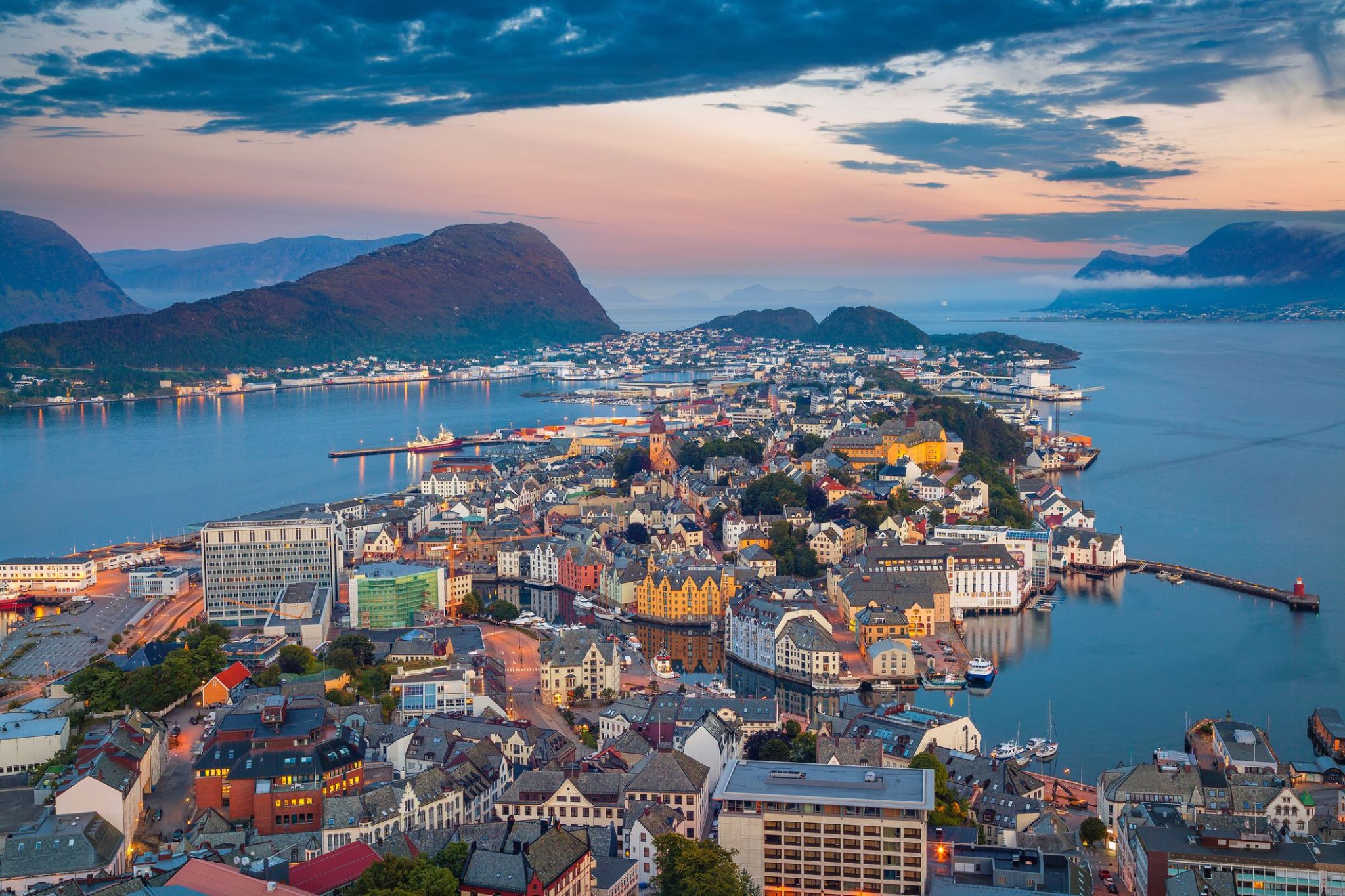
Розташований між величними фіордами та відкритим морем, Олесунн захоплює відвідувачів унікальним поєднанням природної краси та виразної архітектури. Відомий своїм вражаючим стилем модерн, відновленим після руйнівної пожежі 1904 року, місто пропонує чарівну атмосферу, де різнобарвні будівлі вздовж набережної створюють мальовничий краєвид, не схожий на жодне інше місце в Норвегії.
Любителі пригод та культури знайдуть у Олесунні багато цікавого. Від підйому на оглядовий майданчик на пагорбі Аксла з панорамним видом на архіпелаг до відвідування місцевих музеїв та свіжих рибних ринків — це прибережне місто запрошує мандрівників поринути у морську спадщину та захопливі ландшафти Норвегії. Чи то круїз фіордами, чи прогулянка вузькими вуличками — кожна мить у Олесунні обіцяє незабутні враження.

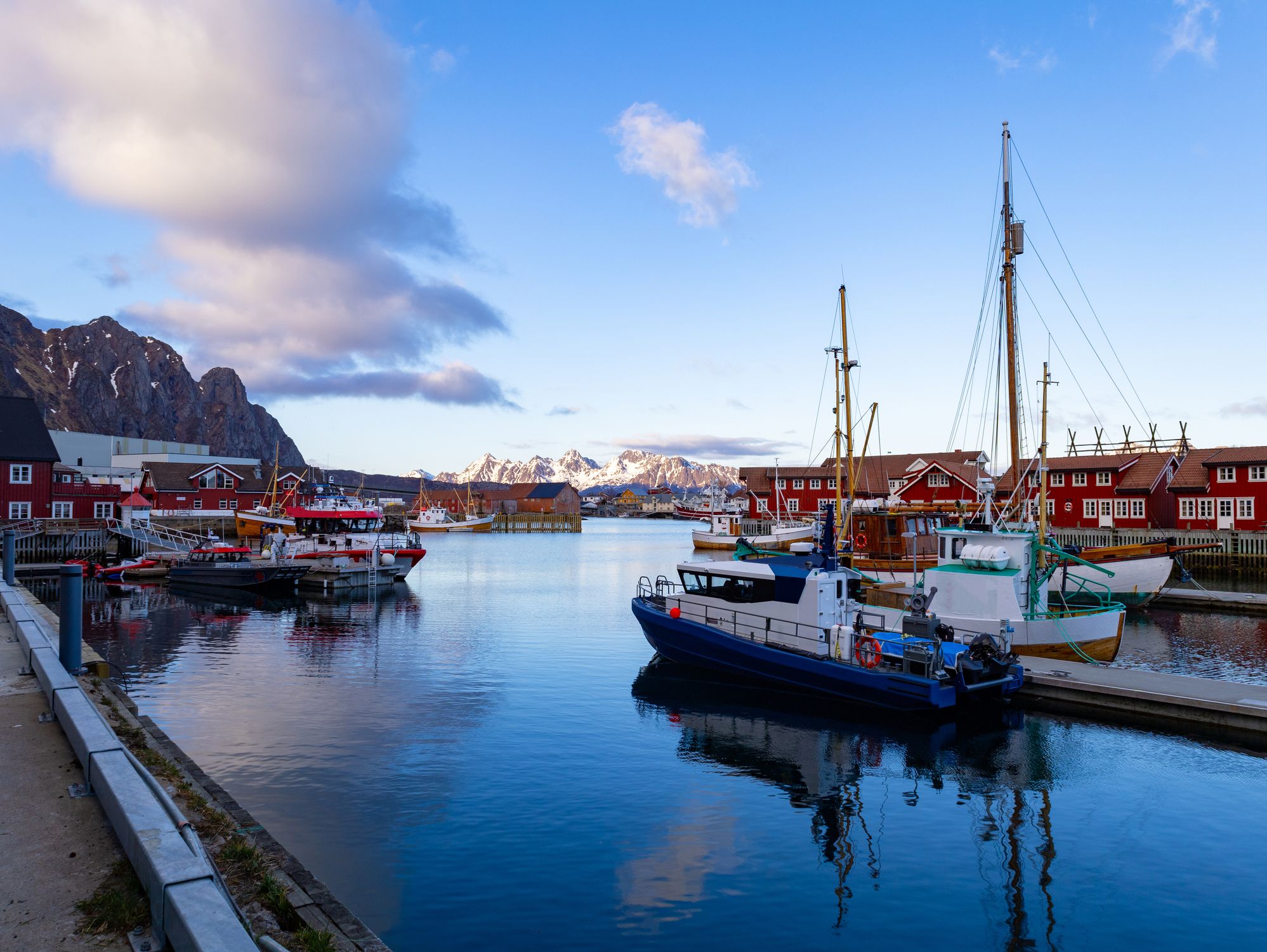
Położone w malowniczym archipelagu Wysp Lofotów, Svolvaer (Svolvær) oferuje niezwykłe połączenie surowego piękna przyrody i tętniącej życiem kultury. Odwiedzający mogą podziwiać strome szczyty wyrastające z morza, poznawać żywe tradycje rybackie oraz spacerować po urokliwym mieście z kolorowymi drewnianymi domami przy porcie.
Miasto Svolvaer (Svolvær) słynie również z bogatej sceny artystycznej, z galeriami prezentującymi prace lokalnych malarzy i rzemieślników. Miłośnicy aktywnego wypoczynku znajdą tu możliwości kajakarstwa morskiego, wędrówek, a zimą – wyprawy na safari w poszukiwaniu zorzy polarnej, co czyni to miejsce idealnym dla poszukiwaczy przygód i prawdziwego arktycznego uroku.

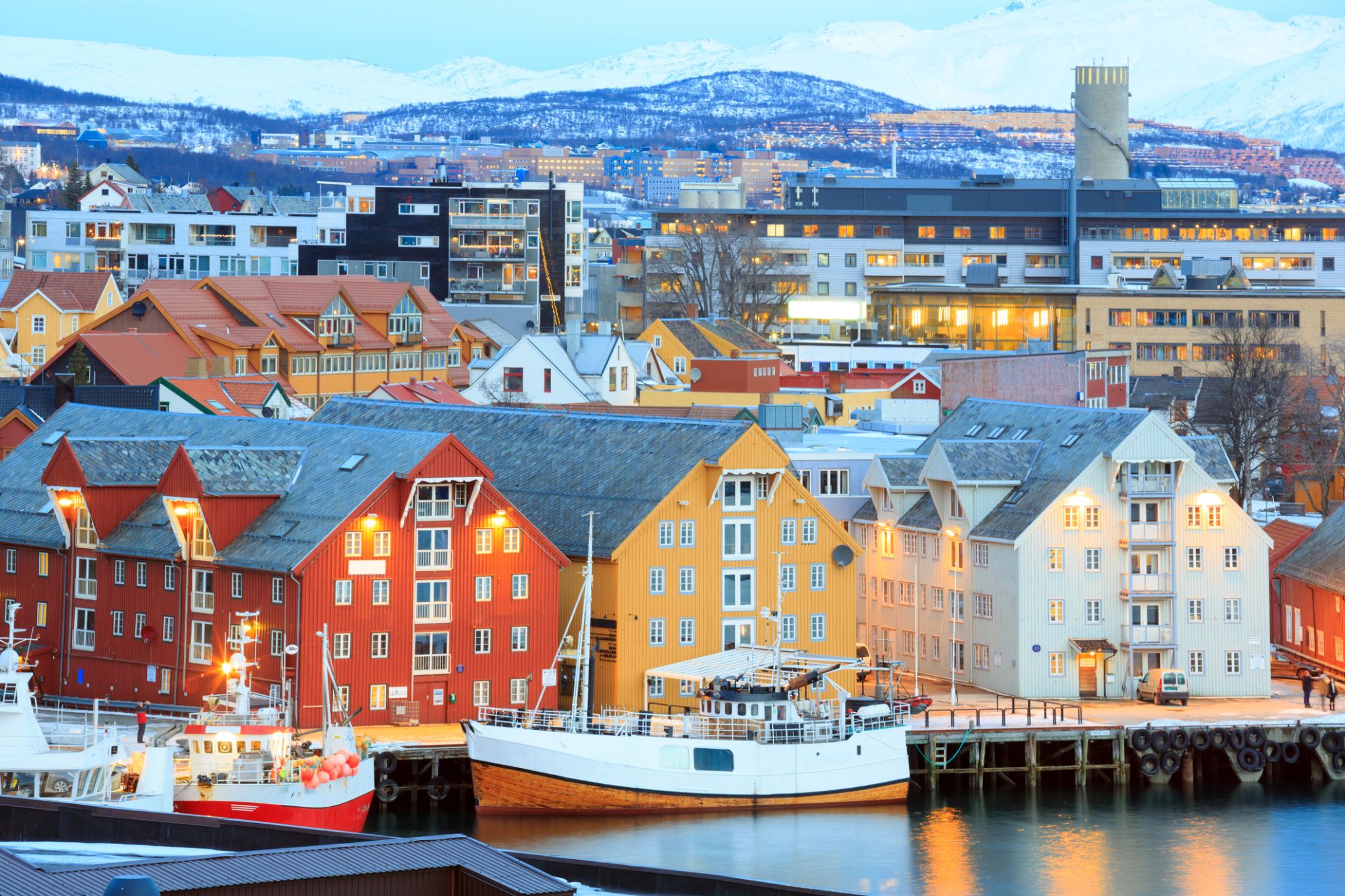
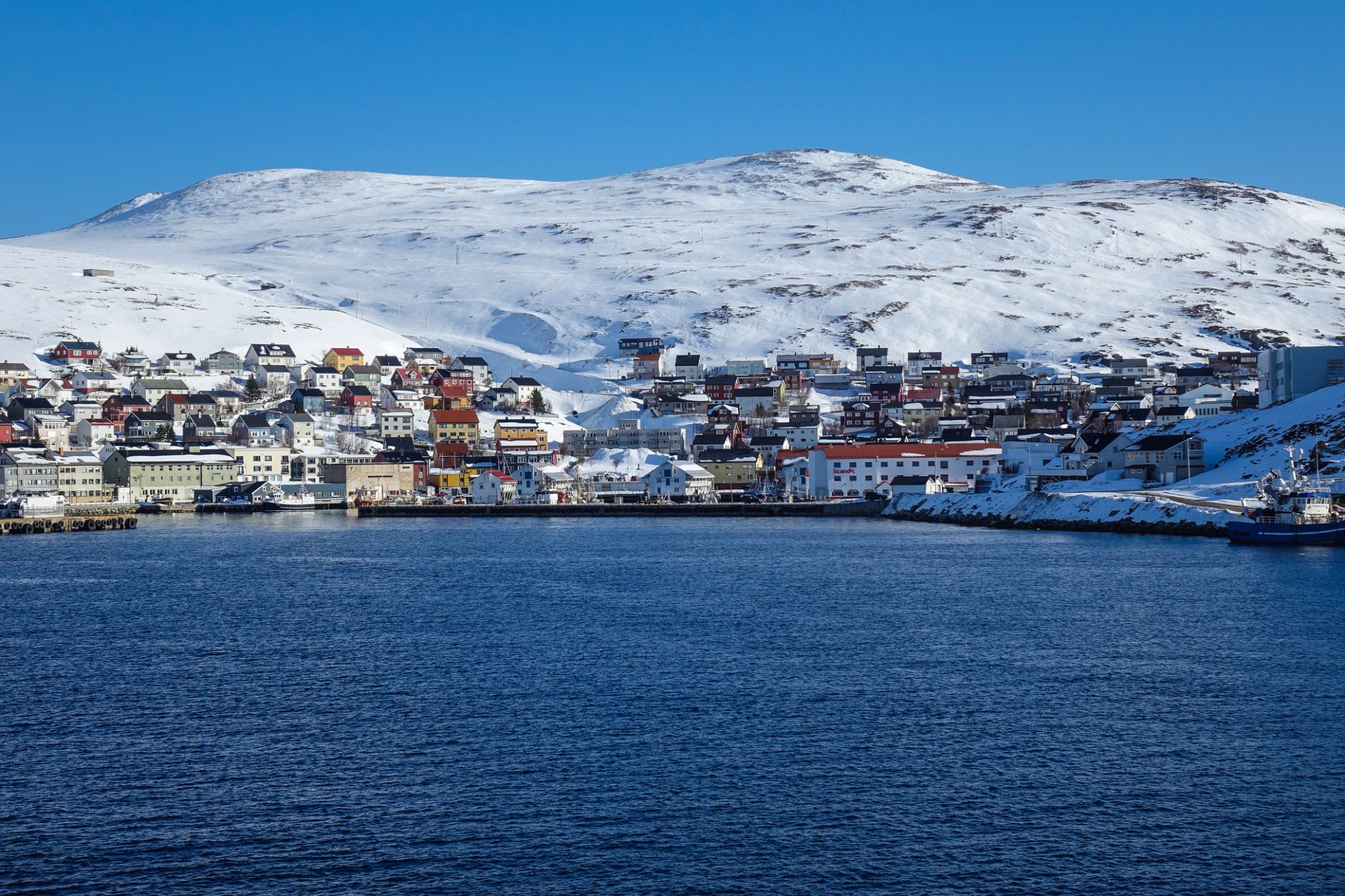
Honningsvåg is the northernmost city in Norway. It is located in Nordkapp Municipality in Finnmark county. Legislation effective in 1997 states that a Norwegian city/town (same word in Norwegian) must have at least 5,000 inhabitants, but Honningsvåg was declared a city in 1996, thus exempt from this legislation, so it is also one of the smallest cities in Norway. The 1.05-square-kilometre (260-acre) town has a population (2017) of 2,484 which gives the town a population density of 2,366 inhabitants per square kilometre (6,130/sq mi).
Honningsvåg is situated at a bay on the southeastern side of the large island of Magerøya, while the famous North Cape and its visitor center is on the northern side of the island. Honningsvåg is a port of call for cruise ships, especially in the summer months. The ice-free ocean (southwestern part of the Barents Sea) provides rich fisheries and tourism is also important to the town. Even at 71°N, many private gardens in Honningsvåg have trees, although rarely more than 3 to 4 metres (9.8 to 13.1 ft) tall.

Honningsvåg is the northernmost city in Norway. It is located in Nordkapp Municipality in Finnmark county. Legislation effective in 1997 states that a Norwegian city/town (same word in Norwegian) must have at least 5,000 inhabitants, but Honningsvåg was declared a city in 1996, thus exempt from this legislation, so it is also one of the smallest cities in Norway. The 1.05-square-kilometre (260-acre) town has a population (2017) of 2,484 which gives the town a population density of 2,366 inhabitants per square kilometre (6,130/sq mi).
Honningsvåg is situated at a bay on the southeastern side of the large island of Magerøya, while the famous North Cape and its visitor center is on the northern side of the island. Honningsvåg is a port of call for cruise ships, especially in the summer months. The ice-free ocean (southwestern part of the Barents Sea) provides rich fisheries and tourism is also important to the town. Even at 71°N, many private gardens in Honningsvåg have trees, although rarely more than 3 to 4 metres (9.8 to 13.1 ft) tall.
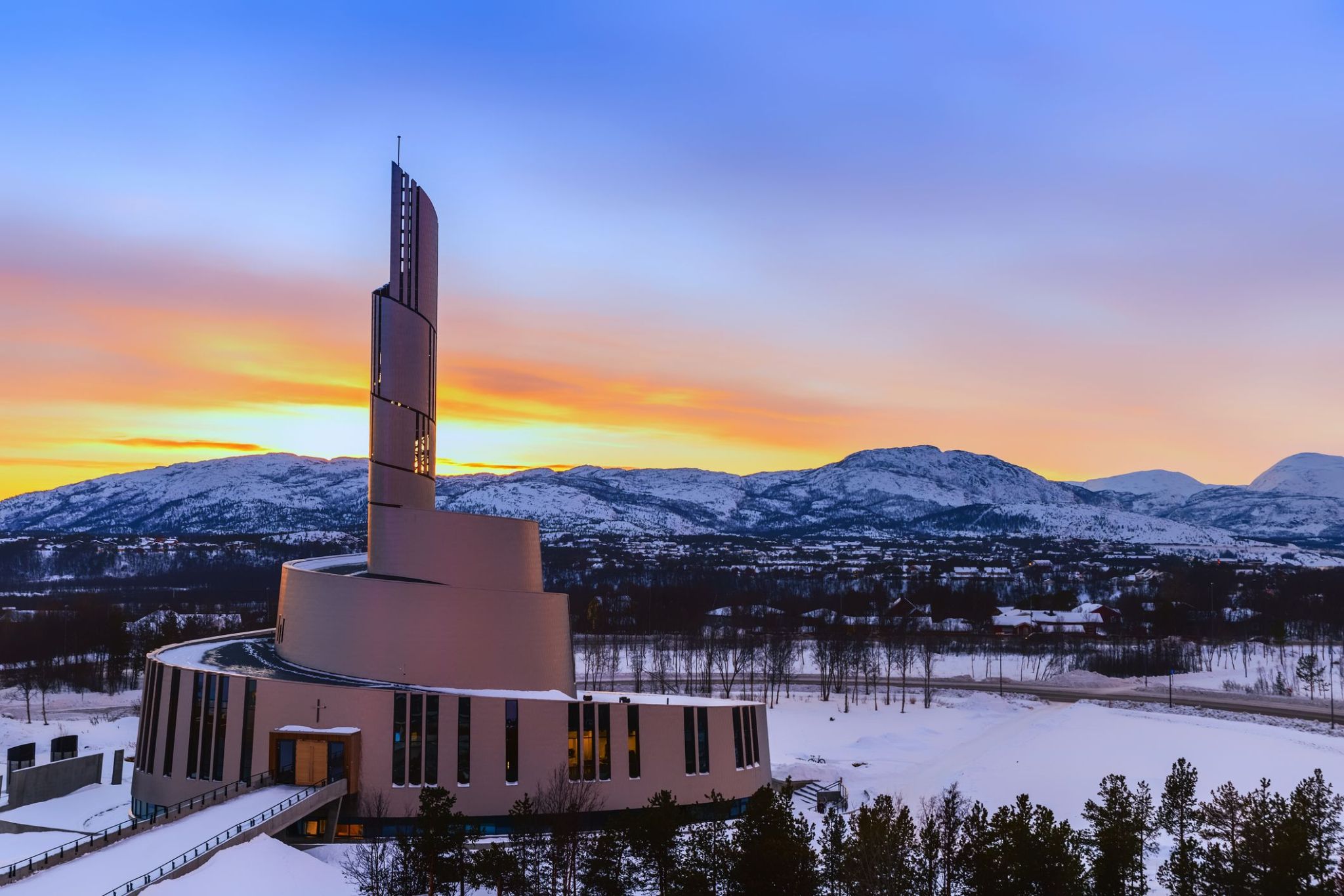
Zanurzona w atmosferze majestatycznej północy, Alta w Norwegii oferuje wyjątkowe połączenie dzikiej przyrody, dziedzictwa kulturowego i arktycznego spokoju. To miasto w regionie Finnmark słynie ze starożytnych rytów naskalnych wpisanych na listę światowego dziedzictwa UNESCO oraz z jednych z najlepszych widoków na zorzę polarną w kraju. Alta to także punkt wyjścia do wypraw na płaskowyż arktyczny i niezapomnianych wycieczek przez lodowe jaskinie i ośnieżone lasy.
Alta to nie tylko miejsce cudów natury, ale także centrum nowoczesnej północy, gdzie tradycje Saamów harmonijnie łączą się z norweską innowacyjnością. Można tu odwiedzić słynny lodowy hotel Sorrisniva, skosztować zupy z ryb arktycznych lub przejechać się psim zaprzęgiem. O każdej porze roku miasto zaprasza podróżnych do ponownego odkrywania północy — z ciepłem, gościnnością i niezapomnianymi przygodami za kołem podbiegunowym.
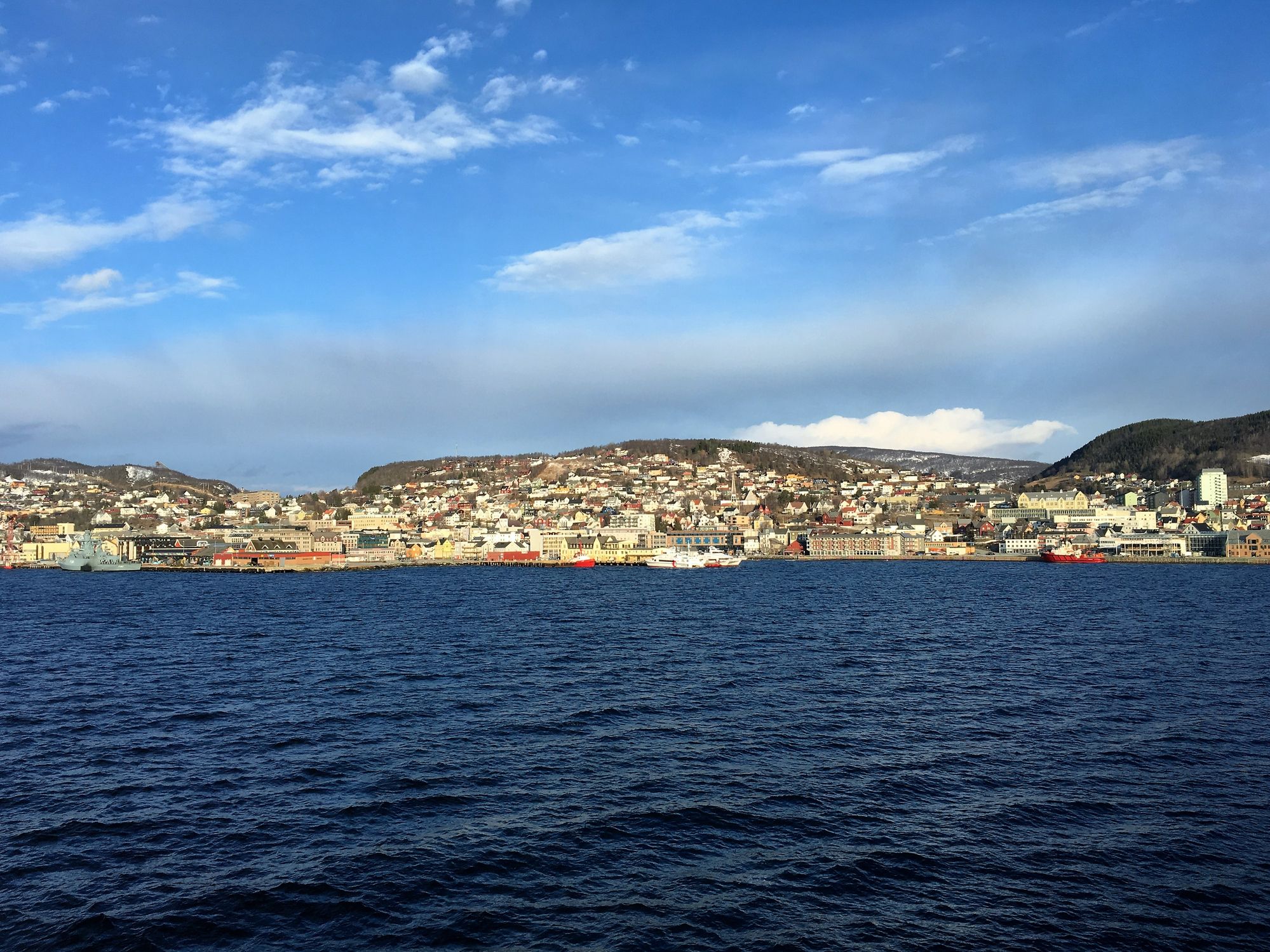
Między fiordami a zielonymi wzgórzami Harstad na północy Norwegii zachwyca odwiedzających przytulną miejską atmosferą i imponującymi arktycznymi krajobrazami. Miasto znane jest jako „muzyczna stolica północnej Norwegii” dzięki corocznemu Festiwalowi Północnej Norwegii, który wypełnia ulice muzyką i twórczą energią. Można tu spacerować malowniczą promenadą, podziwiać łodzie rybackie w porcie i cieszyć się widokami na fiordy, gdzie często można zobaczyć bieliki.
Odwiedzający Harstad mogą odkrywać północne wybrzeże, wybierając się na kajaki lub rejs morski, aby poczuć prawdziwą bliskość z naturą. W pobliżu znajduje się historyczne centrum Trøndelag oraz ruiny najstarszego kościoła w północnej Norwegii – Trondenes, gdzie można dotknąć historii wikingów. To miejsce oferuje spokój, inspirację i prawdziwe piękno arktycznej północy Norwegii.
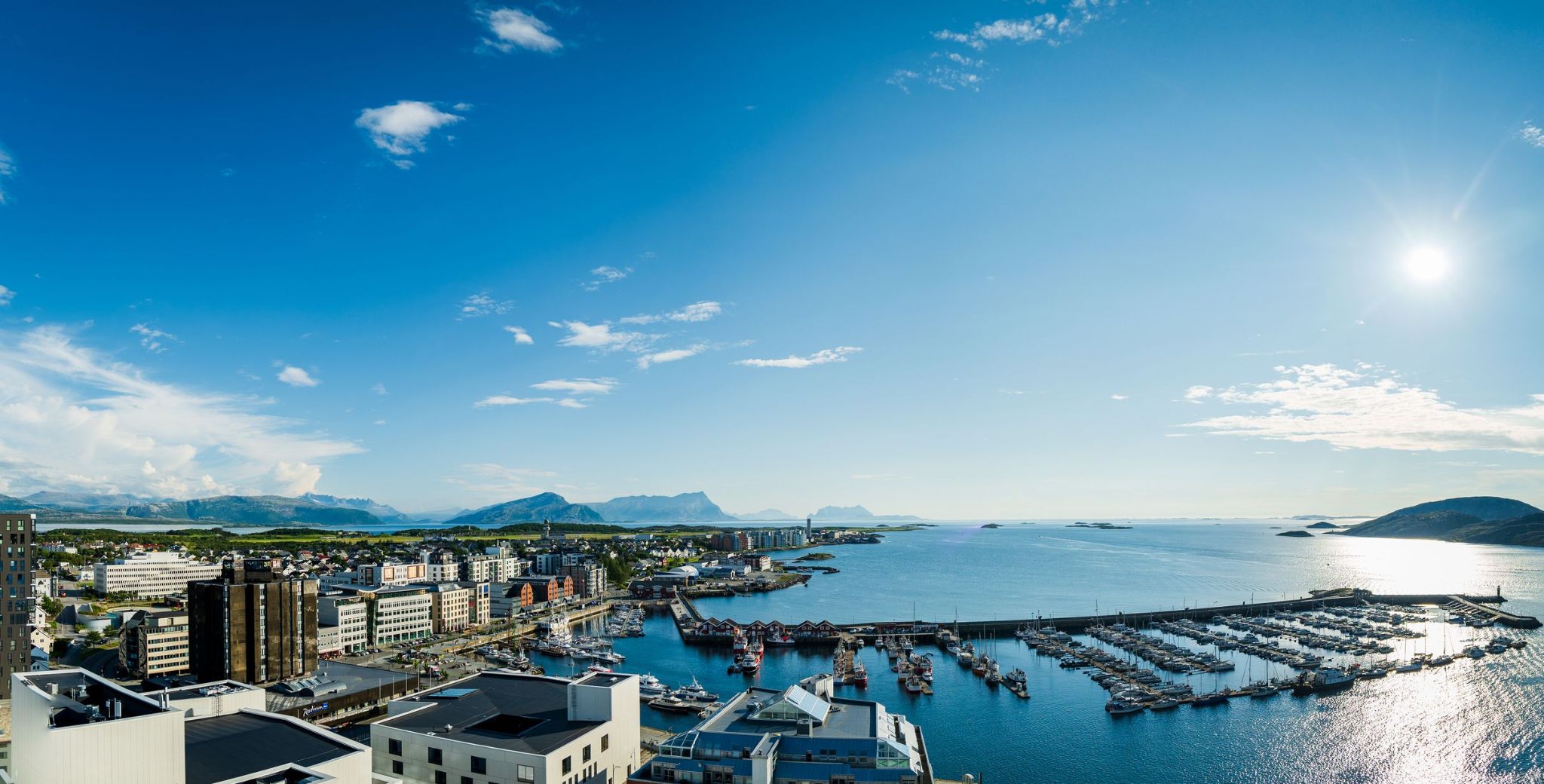
Położone na malowniczym wybrzeżu północnej Norwegii, to miasto przyciąga podróżników swoją unikalną przyrodą i tętniącym życiem kulturalnym. Bodø jest ważnym portem i bramą do Arktyki, gdzie można podziwiać zapierające dech w piersiach widoki na fiordy i góry oraz doświadczyć jednego z najbardziej imponujących zjawisk przyrodniczych — zorzy polarnej.
W Bodø każdy znajdzie coś dla siebie: od aktywnego wypoczynku na świeżym powietrzu — pieszych wędrówek, wędkowania i rejsów łodzią, po zwiedzanie lokalnej historii w muzeach i współczesnych przestrzeniach artystycznych. Miasto słynie także z bliskości do rezerwatu przyrody Saltfjellet oraz parku narodowego Rondane, co czyni je doskonałą bazą wypadową do odkrywania północnych krajobrazów.
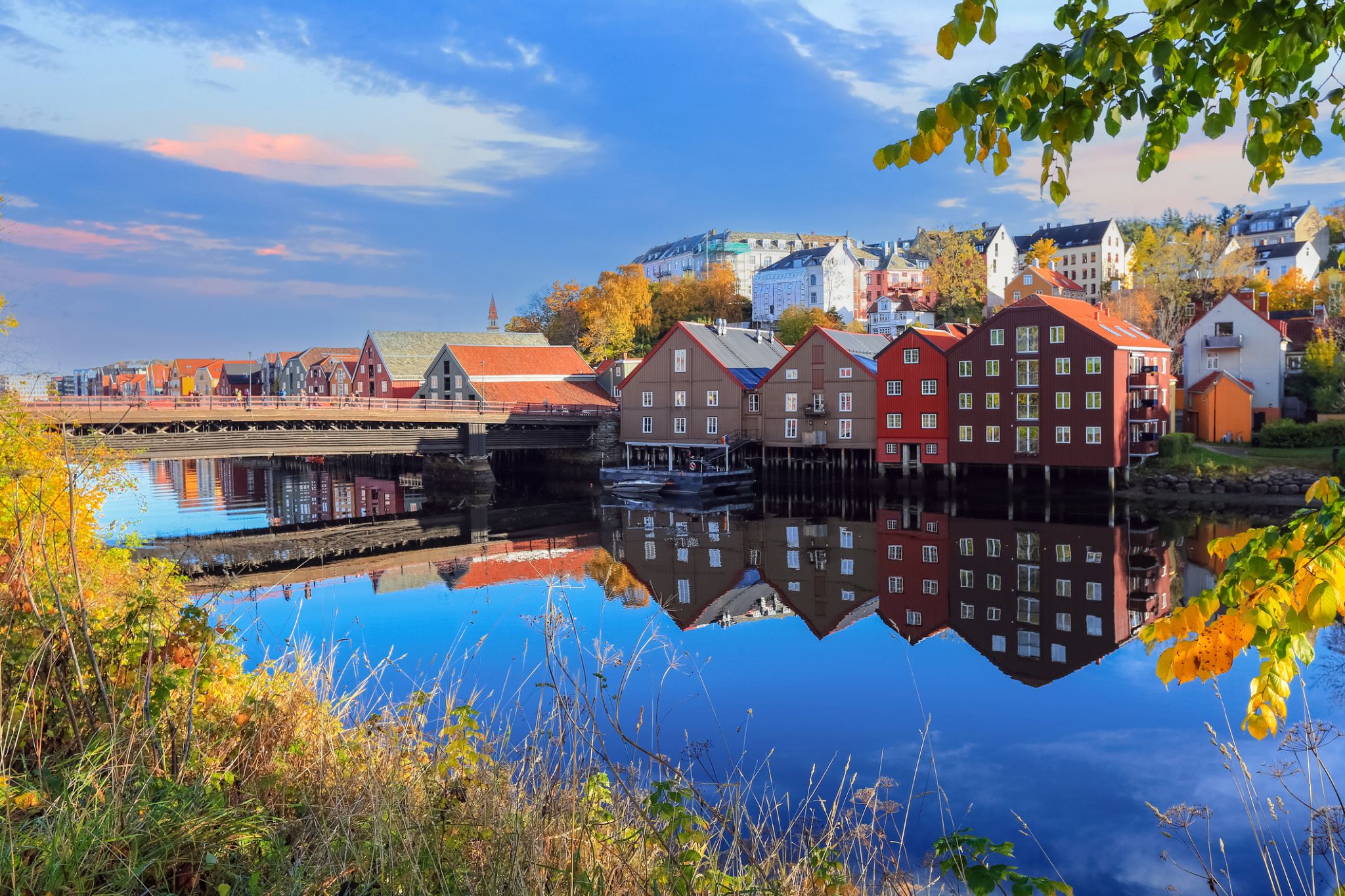
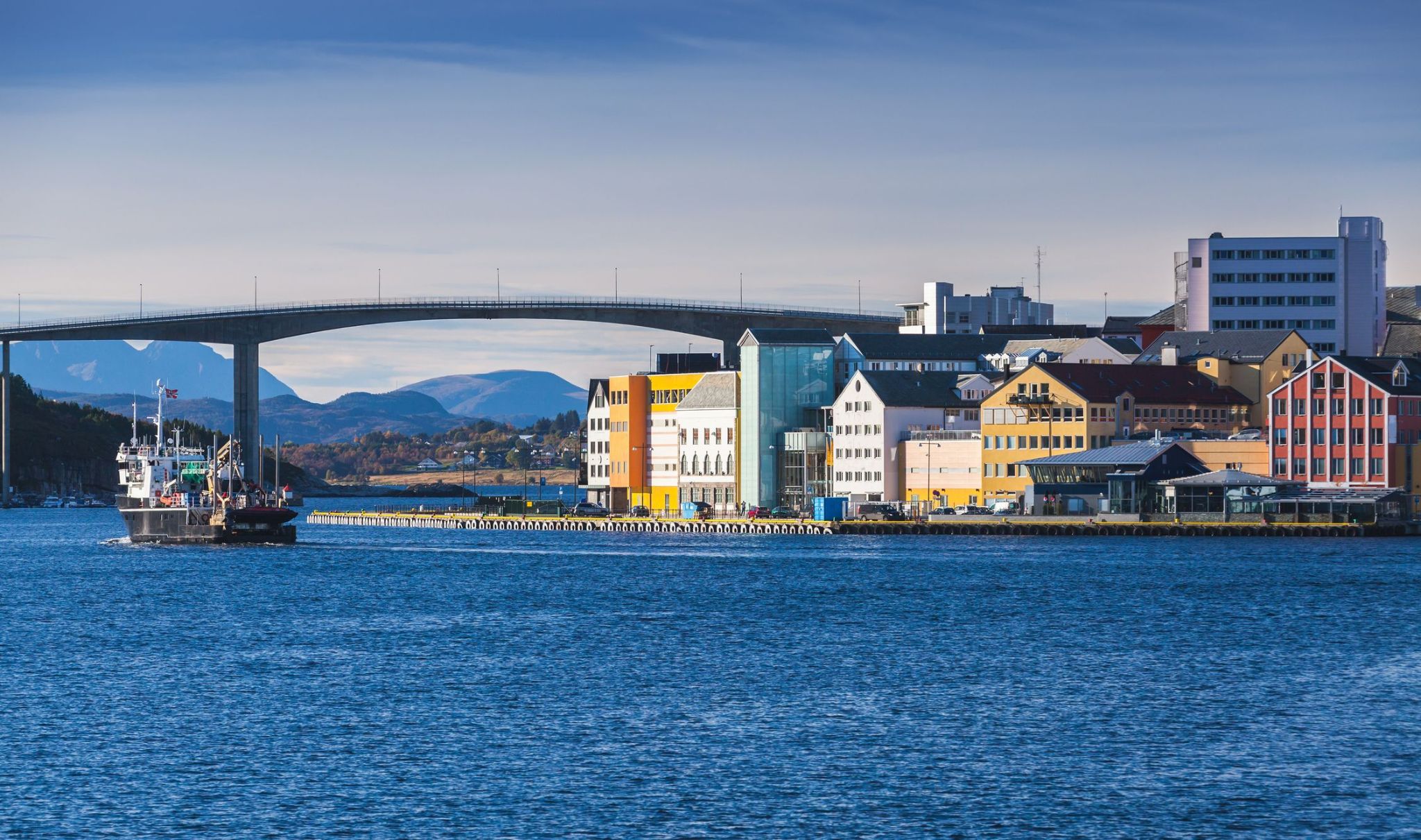
Najbardziej wysunięte na południe wybrzeże Norwegii zaprasza Cię do odkrycia niezwykłego miasta Kristiansand. To urocze miasteczko otoczone jest z trzech stron morzem. Jest to piąte co do wielkości miasto w kraju, a mimo że jego centrum mieści się na niewielkim obszarze zaledwie 1 km², Kristiansand ma wiele do zaoferowania swoim gościom. Nie chodzi tylko o niezwykle czyste norweskie powietrze, ale także o wiele innych interesujących atrakcji.
Wśród nich znajduje się największe zoo w Norwegii, w którym mieszka 80 gatunków zwierząt. Pobyt tutaj ucieszy zarówno dzieci, jak i dorosłych. Możesz przejechać się na karuzelach, pośmiać się w cyrku, a także wybrać się całą rodziną na rejs po morzu lub spędzić czas na placu zabaw.

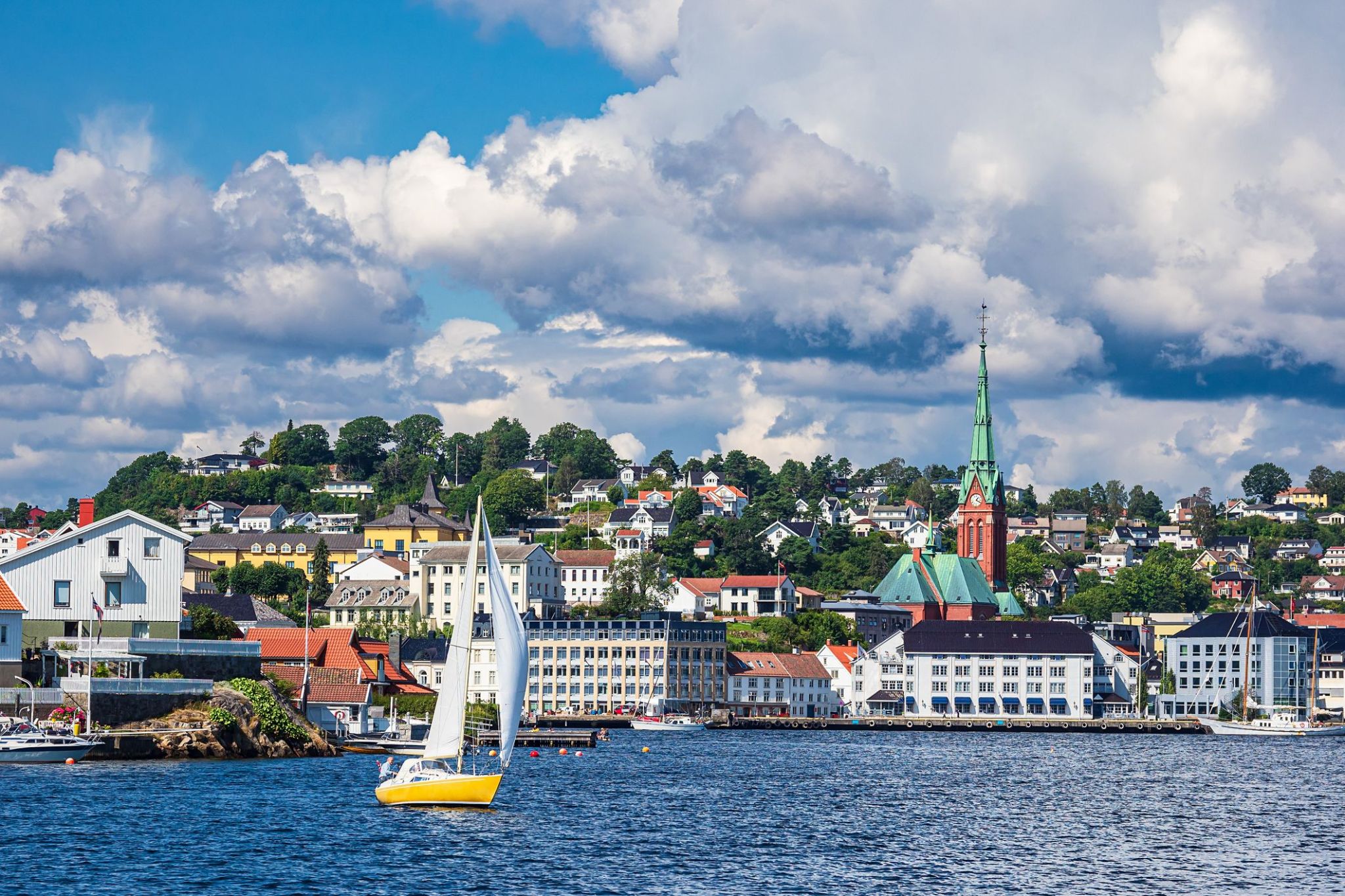
Położone na południowym wybrzeżu Norwegii, Arendal zachwyca przytulną nadmorską atmosferą i historycznym skandynawskim urokiem. To malownicze miasto portowe, słynące z kolorowych drewnianych domów i wąskich uliczek, jest idealne na spokojne spacery i poznanie norweskiego stylu życia. Dzielnica Trefoldigheten, jedna z najstarszych części mieszkalnych, zachowała domy z XVIII wieku.
Arendal przyciąga turystów swoimi morskimi festiwalami, muzeami oraz możliwością zwiedzania pobliskiego archipelagu łodzią. Latem miasto ożywa — jachty, kawiarnie na świeżym powietrzu i wystawy na wolnym powietrzu tworzą ciepłą i gościnną atmosferę. To miejsce, gdzie natura, historia i nowoczesność harmonijnie się łączą, oferując turystom prawdziwe kulturalne doświadczenie.
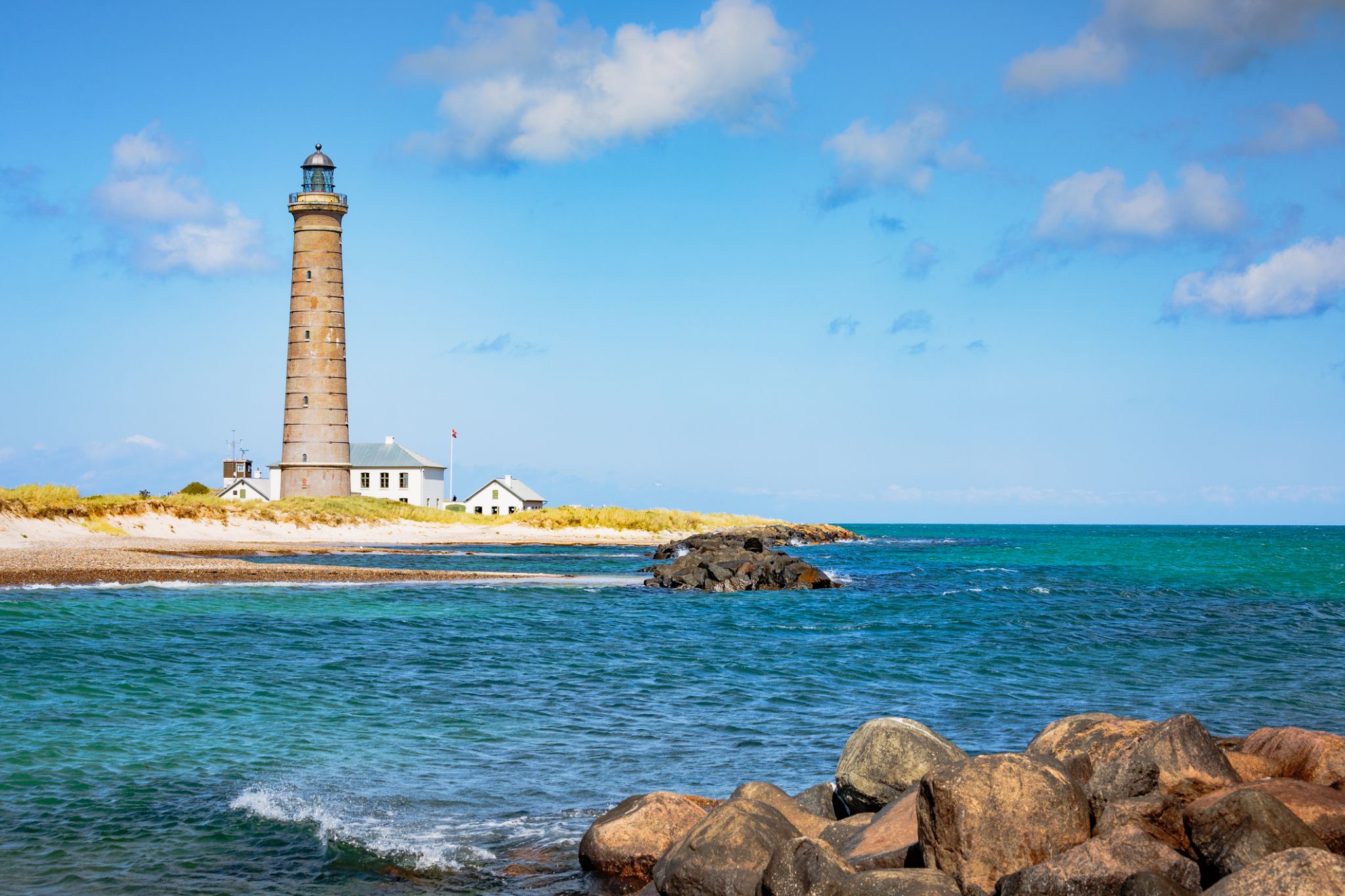
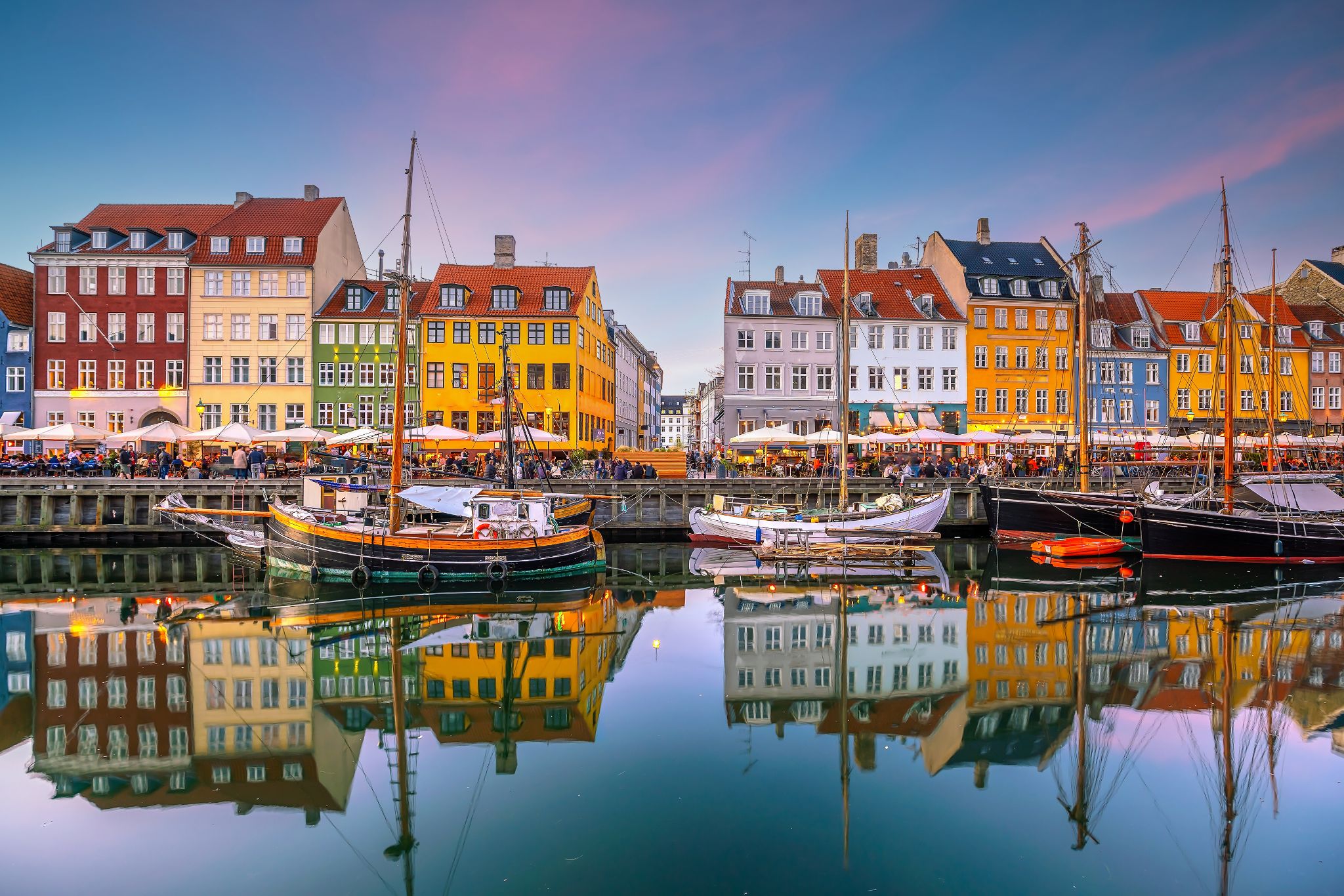
the capital and chief port of Denmark, a city that occupies the eastern part of Zealand and northern part of the island of Amager; population 518,574 (2009).
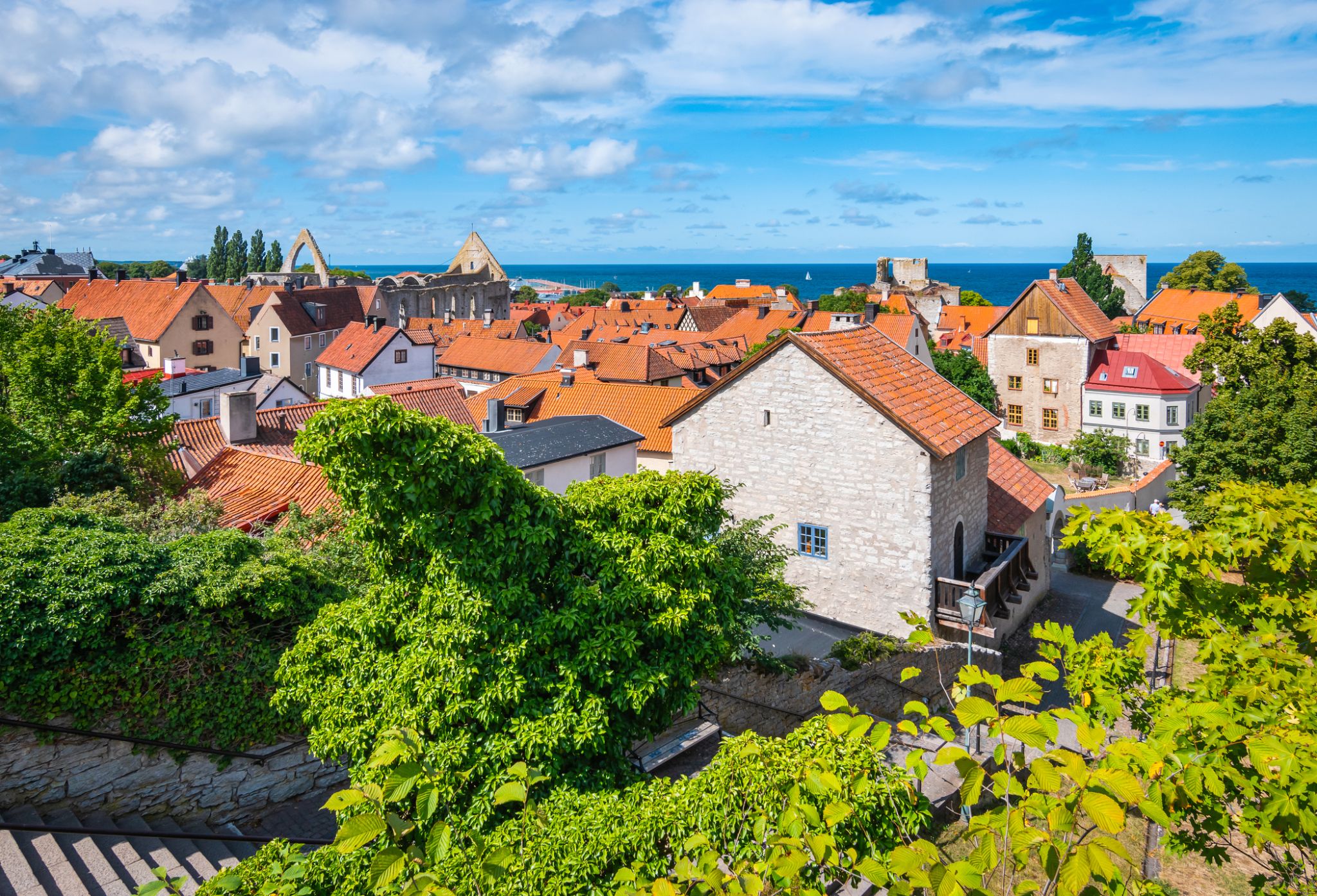
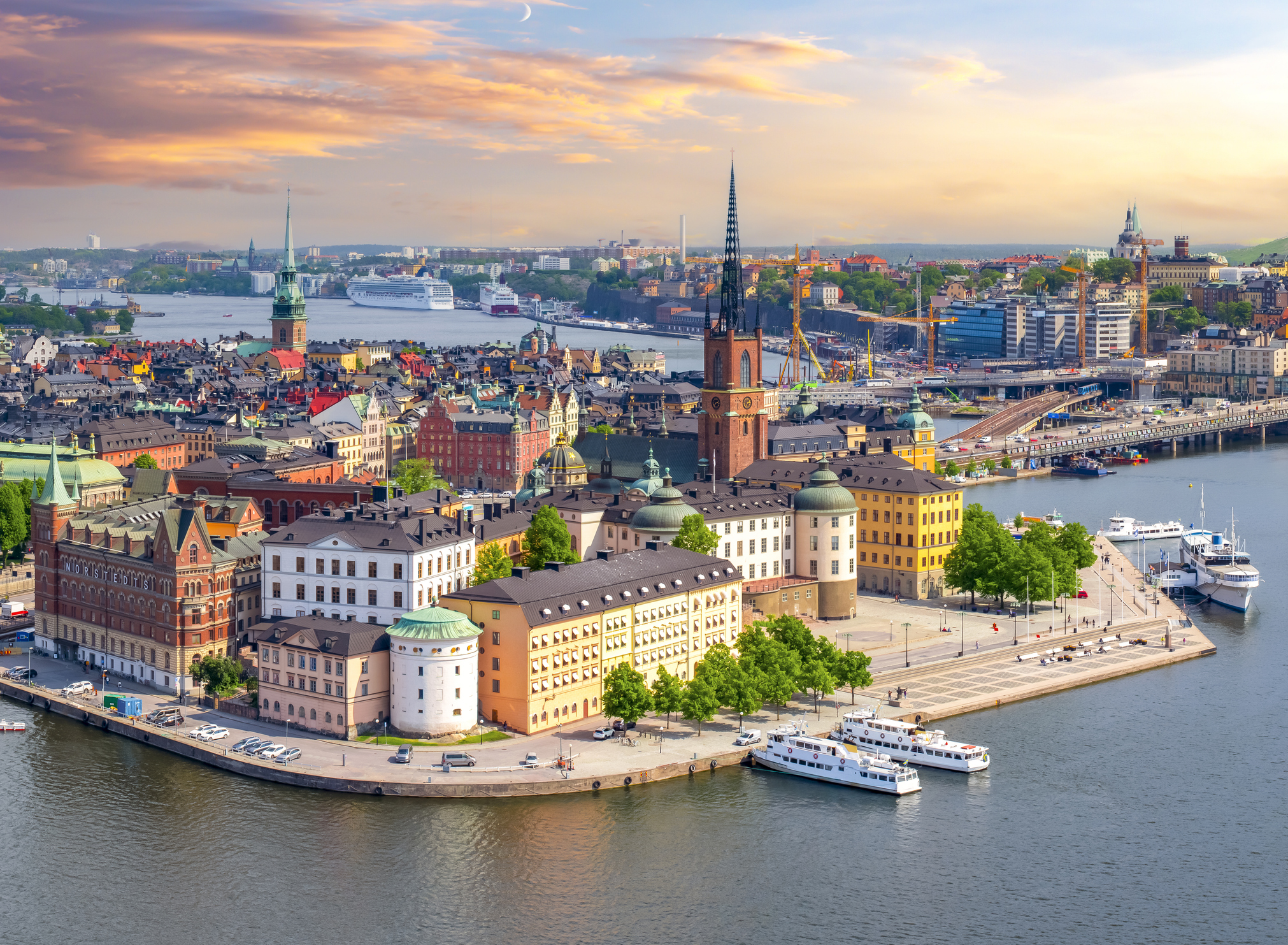
Stockholm is the capital of Sweden and the most populous urban area in the Nordic countries; 960,031 people live in the municipality, approximately 1.5 million in the urban area, and 2.3 million in the metropolitan area. The city stretches across fourteen islands where Lake Mälaren flows into the Baltic Sea. Just outside the city and along the coast is the island chain of the Stockholm archipelago. The area has been settled since the Stone Age, in the 6th millennium BC, and was founded as a city in 1252 by Swedish statesman Birger Jarl. It is also the capital of Stockholm County.
Stockholm is the cultural, media, political, and economic centre of Sweden. The Stockholm region alone accounts for over a third of the country's GDP, and is among the top 10 regions in Europe by GDP per capita. It is an important global city, and the main centre for corporate headquarters in the Nordic region. The city is home to some of Europe's top ranking universities, such as the Stockholm School of Economics, Karolinska Institute and Royal Institute of Technology (KTH). It hosts the annual Nobel Prize ceremonies and banquet at the Stockholm Concert Hall and Stockholm City Hall. One of the city's most prized museums, the Vasa Museum, is the most visited non-art museum in Scandinavia. The Stockholm metro, opened in 1950, is well known for the decor of its stations; it has been called the longest art gallery in the world. Sweden's national football arena is located north of the city centre, in Solna. Ericsson Globe, the national indoor arena, is in the southern part of the city. The city was the host of the 1912 Summer Olympics, and hosted the equestrian portion of the 1956 Summer Olympicsotherwise held in Melbourne, Victoria, Australia.
Stockholm is the seat of the Swedish government and most of its agencies, including the highest courts in the judiciary, and the official residencies of the Swedish monarch and the Prime Minister. The government has its seat in the Rosenbad building, the Riksdag (Swedish parliament) is seated in the Parliament House, and the Prime Minister's residence is adjacent at Sager House. Stockholm Palace is the official residence and principal workplace of the Swedish monarch, while Drottningholm Palace, a World Heritage Site on the outskirts of Stockholm, serves as the Royal Family's private residence.

Stockholm is the capital of Sweden and the most populous urban area in the Nordic countries; 960,031 people live in the municipality, approximately 1.5 million in the urban area, and 2.3 million in the metropolitan area. The city stretches across fourteen islands where Lake Mälaren flows into the Baltic Sea. Just outside the city and along the coast is the island chain of the Stockholm archipelago. The area has been settled since the Stone Age, in the 6th millennium BC, and was founded as a city in 1252 by Swedish statesman Birger Jarl. It is also the capital of Stockholm County.
Stockholm is the cultural, media, political, and economic centre of Sweden. The Stockholm region alone accounts for over a third of the country's GDP, and is among the top 10 regions in Europe by GDP per capita. It is an important global city, and the main centre for corporate headquarters in the Nordic region. The city is home to some of Europe's top ranking universities, such as the Stockholm School of Economics, Karolinska Institute and Royal Institute of Technology (KTH). It hosts the annual Nobel Prize ceremonies and banquet at the Stockholm Concert Hall and Stockholm City Hall. One of the city's most prized museums, the Vasa Museum, is the most visited non-art museum in Scandinavia. The Stockholm metro, opened in 1950, is well known for the decor of its stations; it has been called the longest art gallery in the world. Sweden's national football arena is located north of the city centre, in Solna. Ericsson Globe, the national indoor arena, is in the southern part of the city. The city was the host of the 1912 Summer Olympics, and hosted the equestrian portion of the 1956 Summer Olympicsotherwise held in Melbourne, Victoria, Australia.
Stockholm is the seat of the Swedish government and most of its agencies, including the highest courts in the judiciary, and the official residencies of the Swedish monarch and the Prime Minister. The government has its seat in the Rosenbad building, the Riksdag (Swedish parliament) is seated in the Parliament House, and the Prime Minister's residence is adjacent at Sager House. Stockholm Palace is the official residence and principal workplace of the Swedish monarch, while Drottningholm Palace, a World Heritage Site on the outskirts of Stockholm, serves as the Royal Family's private residence.
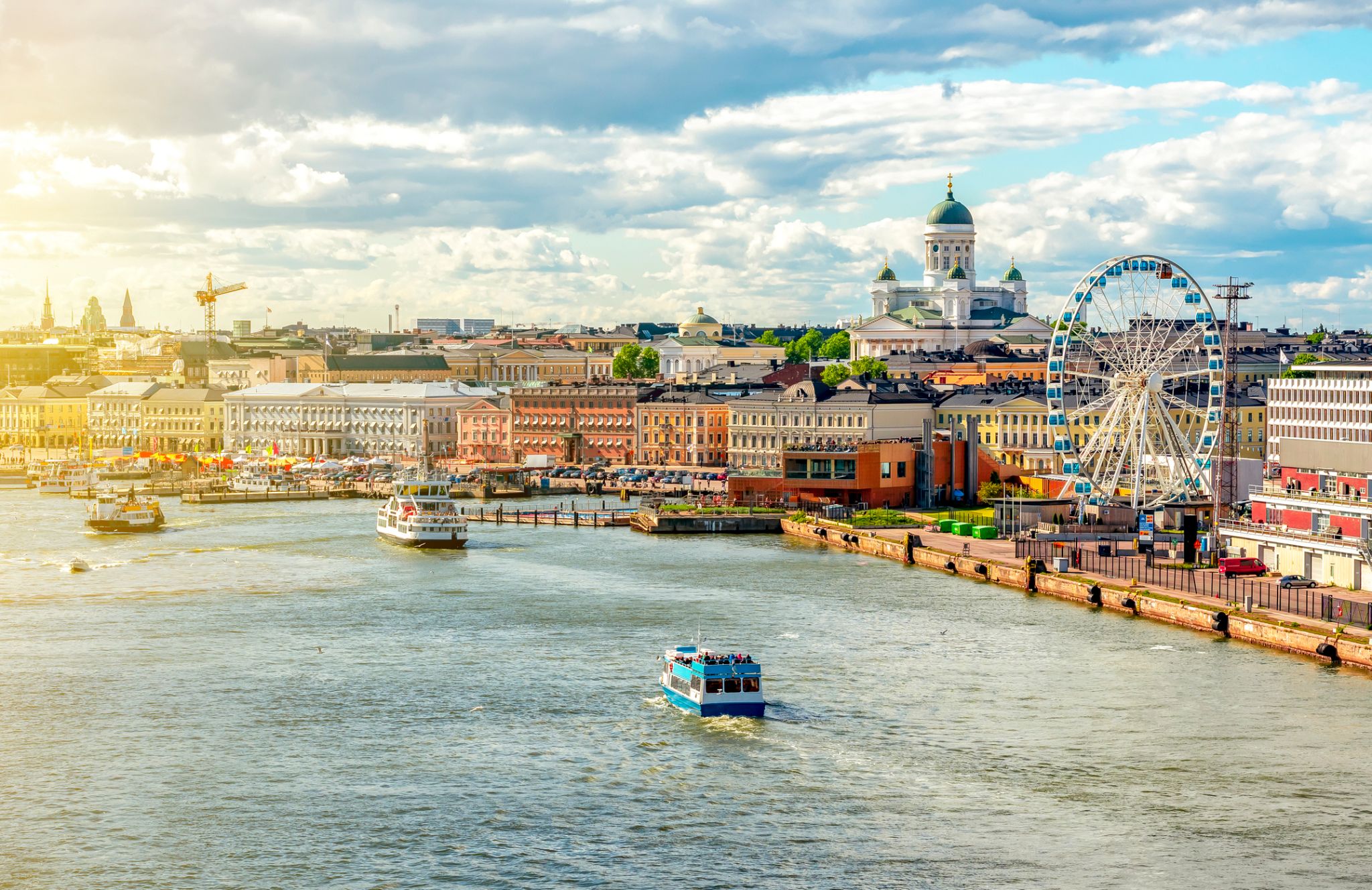
Helsinki located in the southern Finland, and has a population of 648,650. The city's urban area has a population of 1,268,296, it’s the most important center for politics, education, finance, culture, and research. Helsinki is located 80 kilometers (50 mi) north of Tallinn, Estonia, 400 km (250 mi) east of Stockholm, Sweden, and 390 km (240 mi) west of Saint Petersburg, Russia. It has close ties with these three cities.
Together with the cities of Espoo, Vantaa, and Kauniainen, and the surrounding commuter towns, Helsinki forms the Greater Helsinki metropolitan area, which has a population of nearly 1.5 million. Often being considered a metropolis of the EU member state. After Stockholm and Oslo, Helsinki is the third largest city in the Nordic countries. It is located in the city of Vantaa and is located in the city of Vantaa.
Helsinki was the World Design Capital for 2012, the 1952 Summer Olympics and the 52nd Eurovision Song Contest.
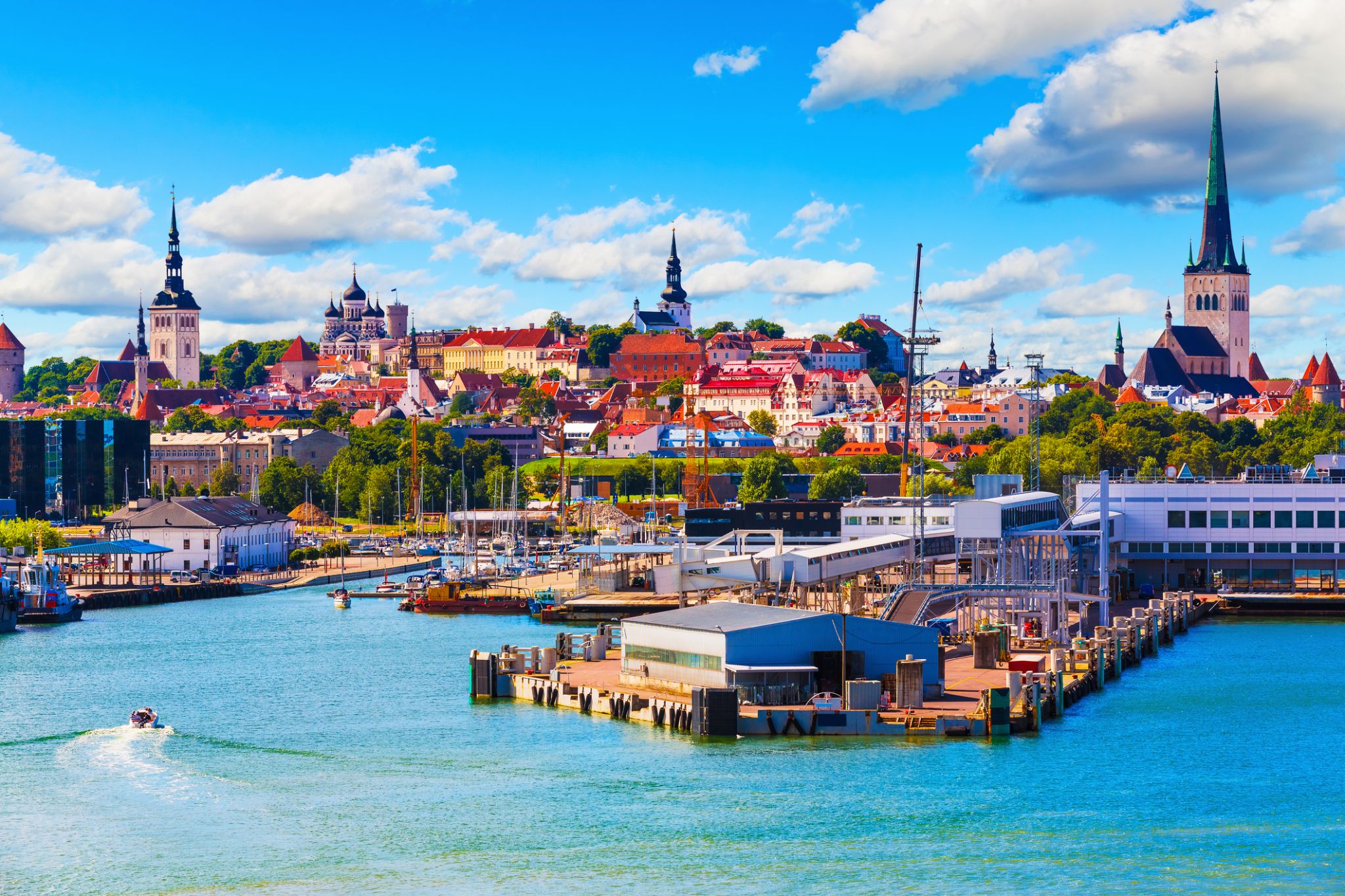
Tallinn is the capital and largest city of Estonia. It is on the northern coast of the country, on the shore of the Gulf of Finland in Harju County. From the 13th century until 1918 (and briefly during the Nazi occupation of Estonia from 1941 to 1944), the city was known as Reval. Tallinn occupies an area of 159.2 km2 (61.5 sq mi) and has a population of 453,033.
Tallinn, first mentioned in 1219, received city rights in 1248, but the earliest human settlements date back 5,000 years. The initial claim over the land was laid by the Danes in 1219, after a successful raid of Lindanise led by Valdemar II of Denmark, followed by a period of alternating Scandinavian and German rule. Due to its strategic location, the city became a major trade hub, especially from the 14th to the 16th century, when it grew in importance as part of the Hanseatic League.


Riga is the capital and largest city of Latvia. With 637,827 inhabitants (2018), it is also the largest city in the three Baltic states, home to one third of Latvia's population and one tenth of the three Baltic states' combined population. The city lies on the Gulf of Riga, at the mouth of the Daugava. Riga's territory covers 307.17 km2 (118.60 sq mi) and lies 1–10 m (3 ft 3 in–32 ft 10 in) above sea level, on a flat and sandy plain.
Riga was founded in 1201 and is a former Hanseatic League member. Riga's historical centre is a UNESCO World Heritage Site, noted for its Art Nouveau/Jugendstil architecture and 19th century wooden architecture. Riga was the European Capital of Culture during 2014, along with Umeå in Sweden. Riga hosted the 2006 NATO Summit, the Eurovision Song Contest 2003, the 2006 IIHF Men's World Ice Hockey Championships and the 2013 World Women's Curling Championship. It is home to the European Union's office of European Regulators for Electronic Communications (BEREC).
In 2016, Riga received over 1.4 million visitors. It is served by Riga International Airport, the largest and busiest airport in the Baltic states. Riga is a member of Eurocities, the Union of the Baltic Cities (UBC) and Union of Capitals of the European Union (UCEU).
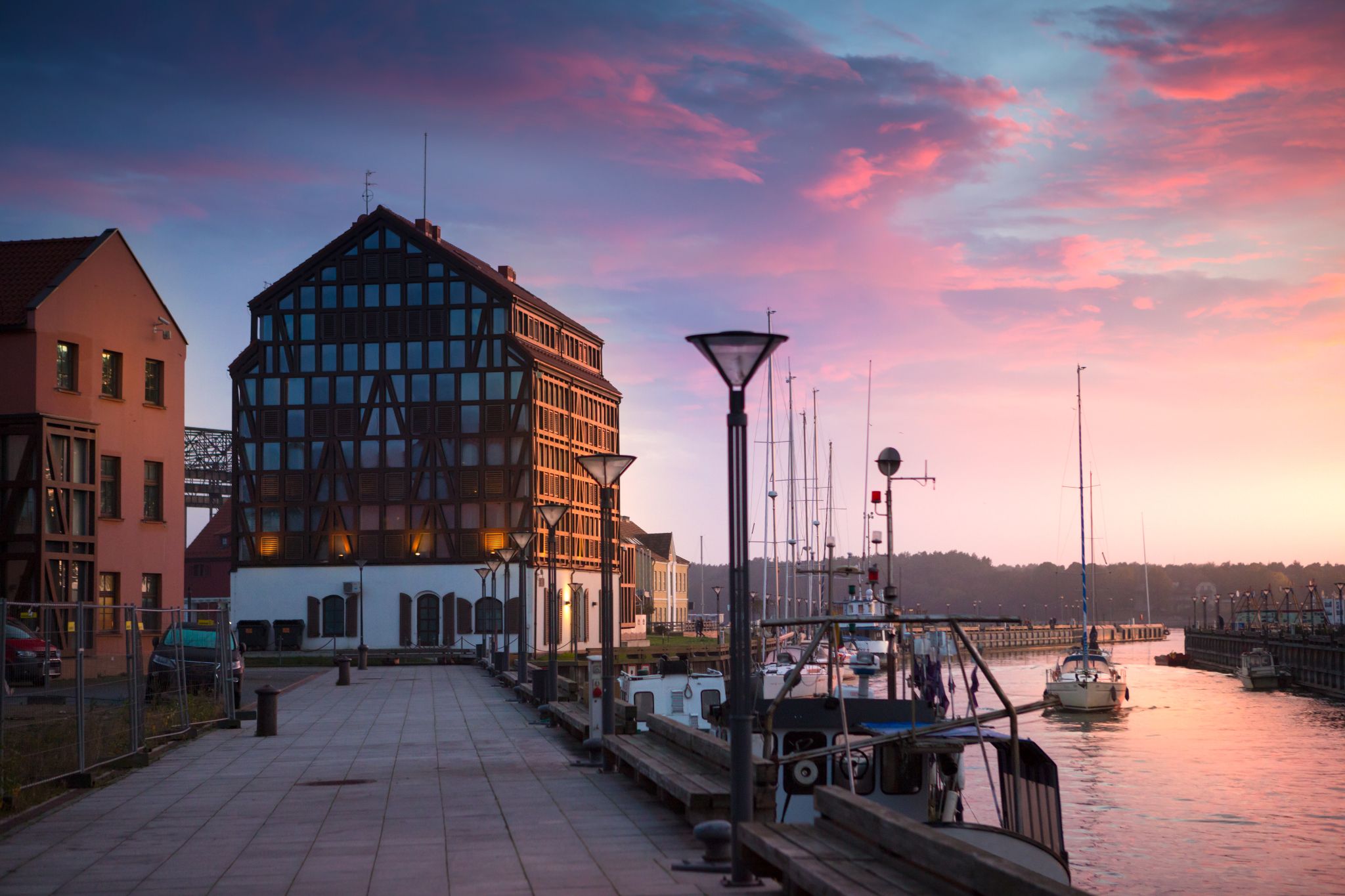
Klaipėda is a city in Lithuania on the Baltic Sea coast. It is the third largest city in Lithuania and the capital of Klaipėda County.
The city has a complex recorded history, partially due to the combined regional importance of the usually ice-free Port of Klaipėda at the mouth of the Akmena-Danė River. It was controlled by successive German states until the 1919 Treaty of Versailles. As a result of the 1923 Klaipėda Revolt it was added to Lithuania and has remained with Lithuania to this day, except for the period between 1939 and 1945 when it returned to Germany following the 1939 German ultimatum to Lithuania and the German–Soviet Union Molotov–Ribbentrop Pact.
The population has shrunk from the city to suburbs and the hinterland. The city had a population of 207,100 in 1992 to 157,350 in 2014 but the city is growing again. Popular seaside resorts found close to Klaipėda are Nida to the south on the Curonian Spit and Palanga to the north.


Ciche uliczki z domami szachulcowymi sprawiają, że Ronne (Rønne) jest przytulnym zakątkiem na duńskiej wyspie Bornholm, gdzie każdy krok wypełniony jest zapachem morza i świeżego pieczywa z lokalnych piekarni. Miasto słynie z warsztatów ceramiki i szkła oraz przytulnej atmosfery portu rybackiego, w którym można spróbować świeżo wędzonego śledzia i obserwować, jak statki powoli wpływają do portu. Tutaj czas zwalnia, pozwalając cieszyć się spacerami po starym mieście z brukowanymi uliczkami i malowniczymi domami z XVIII wieku.
W Ronne podróżnych czeka spokojny wypoczynek z nutą duńskiego przytulnego klimatu i kreatywnej atmosfery wyspy. Muzeum Bornholmu przybliża historię wyspy i tradycje morskie, a spacery wzdłuż wybrzeża ukazują skaliste brzegi i czyste plaże zapraszające do odpoczynku przez cały rok. To miasto jest idealnym miejscem dla tych, którzy chcą poczuć autentyczną Danię, zaczerpnąć morskiego powietrza i odkryć ciepłą gościnność Bornholmu.

the capital and chief port of Denmark, a city that occupies the eastern part of Zealand and northern part of the island of Amager; population 518,574 (2009).
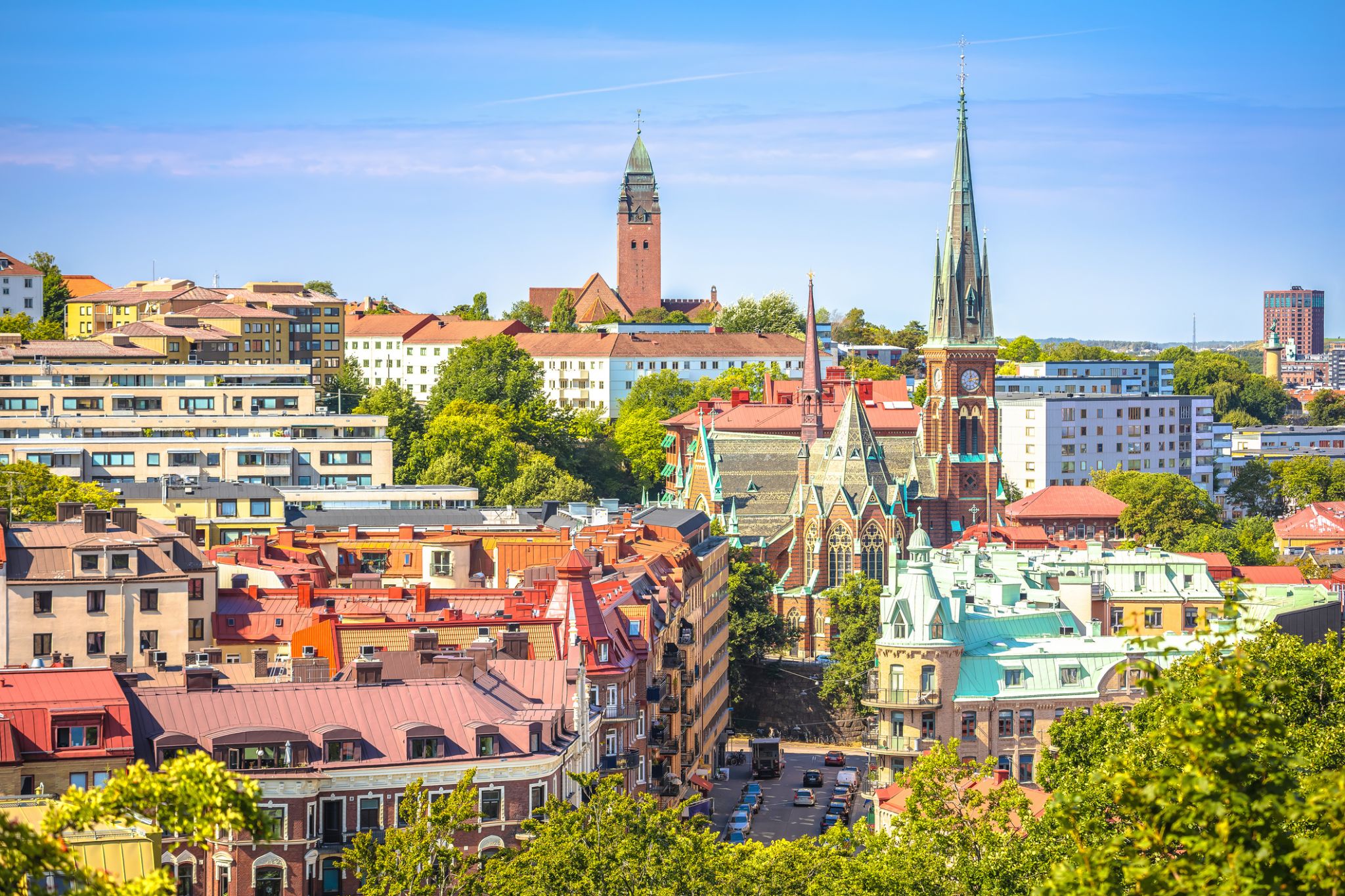
Gothenburg is the second-largest city in Sweden, fifth-largest in the Nordic countries, and capital of the Västra Götaland County. It is situated by Kattegat, on the west coast of Sweden, and has a population of approximately 570,000 in the city center and about 1 million inhabitants in the metropolitan area.
Gothenburg was founded as a heavily fortified, primarily Dutch, trading colony, by royal charter in 1621 by King Gustavus Adolphus. In addition to the generous privileges (e.g. tax relaxation) given to his Dutch allies from the then-ongoing Thirty Years' War, the king also attracted significant numbers of his German and Scottish allies to populate his only town on the western coast. At a key strategic location at the mouth of the Göta älv, where Scandinavia's largest drainage basin enters the sea, the Port of Gothenburg is now the largest port in the Nordic countries.
Gothenburg is home to many students, as the city includes the University of Gothenburg and Chalmers University of Technology. Volvo was founded in Gothenburg in 1927. The original parent Volvo Group and the now separate Volvo Car Corporation are still headquartered on the island of Hisingen in the city. Other key companies are SKF and Astra Zeneca.
The city hosts the Gothia Cup, the world's largest youth football tournament, alongside some of the largest annual events in Scandinavia. The Gothenburg Film Festival, held in January since 1979, is the leading Scandinavian film festival with over 155,000 visitors each year. In summer, a wide variety of music festivals are held in the city, including the popular Way Out West Festival.


Leith is an area to the north of the city of Edinburgh, Scotland, at the mouth of the Water of Leith.
The earliest surviving historical references are in the royal charter authorising the construction of Holyrood Abbey in 1128. The medieval settlements of Leith had grown into a burgh by 1833, and the burgh was merged into Edinburgh in 1920.
Historically part of the county of Midlothian, Leith is sited on the coast of the Firth of Forth and lies within the council area of the City of Edinburgh.
The port remains one of its most valuable enterprises, handling over 1.5 million tonnes of cargo in 2003.
Previous to the bridge being built in the late 15th century, Leith had settlements on either side of the river, lacking an easy crossing.
South Leith was larger and was controlled by the lairds of Restalrig: the Logan family. It was based on trade and had many merchants' houses and warehouses. This was where ships offloaded their cargoes at The Shore where they were collected by Edinburgh merchants. Leithers were explicitly forbidden by statute to participate directly in the trade at the port, to ensure that landed goods were not sold elsewhere.
North Leith was smaller but proportionately richer, coming under the jurisdiction of Holyrood Abbey. It was effectively a fishing village consisting of one street, now Sandport Street and Quayside Lane. Burgage plots ran down to the river from each house.[6] This has traditionally been the shipbuilding side of Leith with several wet and dry docks built over time. The first dry dock in Scotland was built here in 1720. A small peninsula of land on the east bank also came under the same jurisdiction on what is now Sheriff Brae/Sheriff Bank.
The first bridge to link both banks of the river was built in 1493 by Abbot Bellenden, who controlled the church at North Leith. The bridge was a toll bridge, the revenue supplementing the church's income. Reputedly Leith's oldest building, it was demolished in 1780 to allow ships to sail further upstream.

Leith is an area to the north of the city of Edinburgh, Scotland, at the mouth of the Water of Leith.
The earliest surviving historical references are in the royal charter authorising the construction of Holyrood Abbey in 1128. The medieval settlements of Leith had grown into a burgh by 1833, and the burgh was merged into Edinburgh in 1920.
Historically part of the county of Midlothian, Leith is sited on the coast of the Firth of Forth and lies within the council area of the City of Edinburgh.
The port remains one of its most valuable enterprises, handling over 1.5 million tonnes of cargo in 2003.
Previous to the bridge being built in the late 15th century, Leith had settlements on either side of the river, lacking an easy crossing.
South Leith was larger and was controlled by the lairds of Restalrig: the Logan family. It was based on trade and had many merchants' houses and warehouses. This was where ships offloaded their cargoes at The Shore where they were collected by Edinburgh merchants. Leithers were explicitly forbidden by statute to participate directly in the trade at the port, to ensure that landed goods were not sold elsewhere.
North Leith was smaller but proportionately richer, coming under the jurisdiction of Holyrood Abbey. It was effectively a fishing village consisting of one street, now Sandport Street and Quayside Lane. Burgage plots ran down to the river from each house.[6] This has traditionally been the shipbuilding side of Leith with several wet and dry docks built over time. The first dry dock in Scotland was built here in 1720. A small peninsula of land on the east bank also came under the same jurisdiction on what is now Sheriff Brae/Sheriff Bank.
The first bridge to link both banks of the river was built in 1493 by Abbot Bellenden, who controlled the church at North Leith. The bridge was a toll bridge, the revenue supplementing the church's income. Reputedly Leith's oldest building, it was demolished in 1780 to allow ships to sail further upstream.




The town is well known for the Invergordon Mutiny of 1931. More recently it has also become known for the repair of oil rigs which line up in the Cromarty Firth on which the town is situated. In the 1970s and 1980s nearby Nigg was known for the construction of these rigs. The yard used for this is now attempting to re-establish itself as a fabricator of large offshore wind turbines and oil rig refurbishment since being purchased by Global Energy Group.
For a number of years Invergordon was the site of an aluminium smelter until 1981 when British Aluminium closed it down. The pipeline that covered the conveyor belt from the smelter to the BA pier was not dismantled until the early 2000s and the two large tanks still stand today as well as a water tower.
It still has a grain whisky distillery, operated by Philippines-owned whisky giant Whyte and Mackay, the output of which contributes to many blended whiskies. Connected to the distillery was the Invergordon Distillery Pipe Band.
At present the port is visited by many large cruise liners each year, as the deep water port allows disembarkation for coach tours in the northern Highlands.
Since the 1970s some would perceive the town as a 'Glasgow colony', since many workers were recruited from southern Scotland to work in the oil rig fabrication and aluminium smelting industries. As a result, the residents' accents often show more influence from Glasgow, than the surrounding Easter Ross dialect of Highland Englishalthough this has changed in recent years.
In recent years Global Energy Group have been expanding, with the purchase of the Nigg fabrication yard it has also brought much appreciated work to Invergordon's Docks with the town again full of oil company workers through the day.

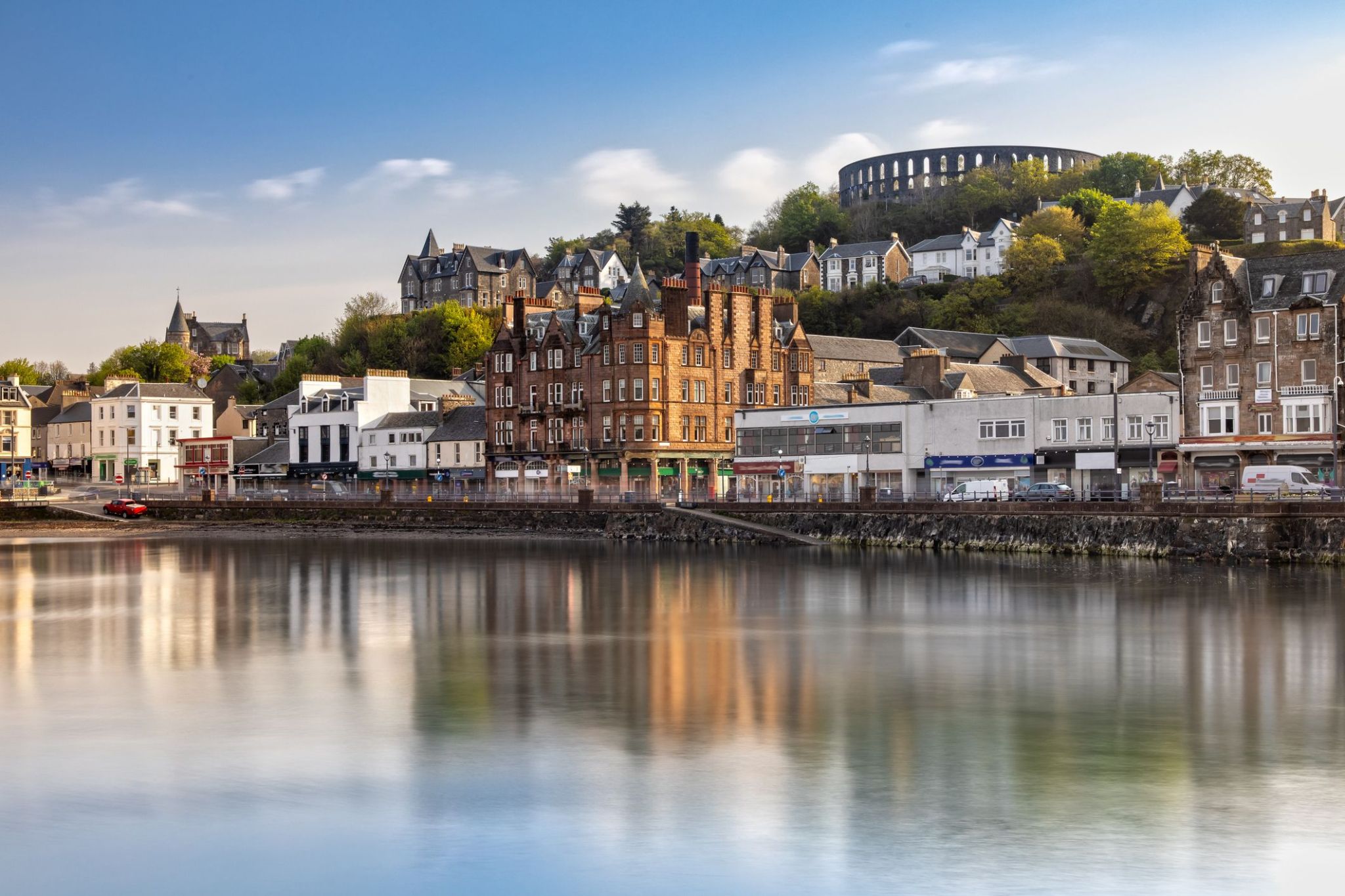
Wśród skalistych wybrzeży zachodniej Szkocji leży urocze nadmorskie miasteczko Oban, często nazywane „bramą do wysp”. Tu majestatyczne krajobrazy spotykają się z bogatą historią — od ruin zamku Dunstaffnage po niezwykłą okrągłą budowlę McCaig’s Tower górującą nad miastem. Port w Oban tętni życiem dzięki promom płynącym na wyspy Mull, Iona i Skye — to doskonały punkt wyjścia do wyspiarskich przygód.
Miłośnicy dobrej kuchni uwielbiają Oban za najświeższe owoce morza: lokalne restauracje słyną z ostryg i wędzonego łososia. Z kolei amatorzy whisky docenią słynną destylarnię Oban, działającą nieprzerwanie od 1794 roku. Spacer po promenadzie, rejsy morskie i nastrojowe zachody słońca czynią to miejsce prawdziwym klejnotem szkockiego Highlandu.

Greenock to miasto w Szkocji, położone na południowo-zachodnim wybrzeżu, 32 kilometry na zachód od Glasgow. Greenock zostało założone jako port, a jego historyczne znaczenie związane jest z rozwojem przemysłu stoczniowego i handlu. Przez wiele lat było ważnym centrum żeglugi, a dziś miasto nadal pełni rolę istotnego węzła transportowego, z dużym portem i nowoczesną infrastrukturą. Greenock słynie również ze swoich historycznych budowli, takich jak latarnia morska w Greenock, a w pobliżu można zobaczyć muzeum żeglugi oraz wiele starych magazynów, które zachowały atmosferę minionych czasów.
Dla turystów Greenock to malownicze miejsce do spacerów wzdłuż nabrzeża i w parkach, a także doskonałe miejsce do poznania historii szkockiego żeglarstwa. Miasto stało się także popularnym miejscem dla podróżnych na statkach wycieczkowych, ponieważ jego port zapewnia dostęp do najpiękniejszych części zachodniego wybrzeża kraju. W okolicach miasta znajduje się wiele naturalnych atrakcji, w tym pobliskie wyspy oraz piękne plaże, gdzie można odpocząć i podziwiać widoki na morze i wybrzeże.

Douglas to stolica i największe miasto Wyspy Man, położone w Morzu Irlandzkim. Miasto, które ma bogatą historię morską, jest znane z malowniczych krajobrazów wybrzeża oraz przytulnej atmosfery. W Douglasie można spacerować po historycznej promenadzie, gdzie znajdują się zabytkowe budynki i nowoczesne kawiarnie, a także odwiedzić lokalne muzeum, które opowiada o morskiej kulturze i tradycjach wyspy. Miasto jest również znane z architektonicznych zabytków, takich jak zamek i historyczne budynki wiktoriańskie, które nadają mu wyjątkowy urok.
Okolice Douglas oferują doskonałe możliwości do aktywnego wypoczynku, w tym wędrówki, spacery wzdłuż wybrzeża i wycieczki rowerowe. Wyspa Man słynie z unikalnej przyrody, a turyści mogą podziwiać widoki na wzgórza, malownicze zatoki i tradycyjne wioski. Ten zakątek Wielkiej Brytanii przyciąga turystów swoją unikalną kulturą, starodawnymi tradycjami oraz pięknymi naturalnymi krajobrazami, co sprawia, że jest to idealne miejsce na relaksujący wypoczynek i ekscytujące podróże.

Dublin is the capital of, and largest city in, Ireland. It is on the east coast of Ireland, in the province of Leinster, at the mouth of the River Liffey, and is bordered on the south by the Wicklow mountains. It has an urban area population of 1,173,179, while the population of the Dublin Region (formerly County Dublin), as of 2016, was 1,347,359, and the population of the Greater Dublin area was 1,904,806.
There is archaeological debate regarding precisely where Dublin was established by Celtic-speaking people in the 7th century AD. Later expanded as a Viking settlement, the Kingdom of Dublin, the city became Ireland's principal settlement following the Norman invasion. The city expanded rapidly from the 17th century and was briefly the second largest city in the British Empire before the Acts of Union in 1800. Following the partition of Ireland in 1922, Dublin became the capital of the Irish Free State, later renamed Ireland.
Dublin is a historical and contemporary centre for education, the arts, administration and industry. As of 2018 the city was listed by the Globalization and World Cities Research Network (GaWC) as a global city, with a ranking of "Alpha -", which places it amongst the top thirty cities in the world.

Dublin is the capital of, and largest city in, Ireland. It is on the east coast of Ireland, in the province of Leinster, at the mouth of the River Liffey, and is bordered on the south by the Wicklow mountains. It has an urban area population of 1,173,179, while the population of the Dublin Region (formerly County Dublin), as of 2016, was 1,347,359, and the population of the Greater Dublin area was 1,904,806.
There is archaeological debate regarding precisely where Dublin was established by Celtic-speaking people in the 7th century AD. Later expanded as a Viking settlement, the Kingdom of Dublin, the city became Ireland's principal settlement following the Norman invasion. The city expanded rapidly from the 17th century and was briefly the second largest city in the British Empire before the Acts of Union in 1800. Following the partition of Ireland in 1922, Dublin became the capital of the Irish Free State, later renamed Ireland.
Dublin is a historical and contemporary centre for education, the arts, administration and industry. As of 2018 the city was listed by the Globalization and World Cities Research Network (GaWC) as a global city, with a ranking of "Alpha -", which places it amongst the top thirty cities in the world.


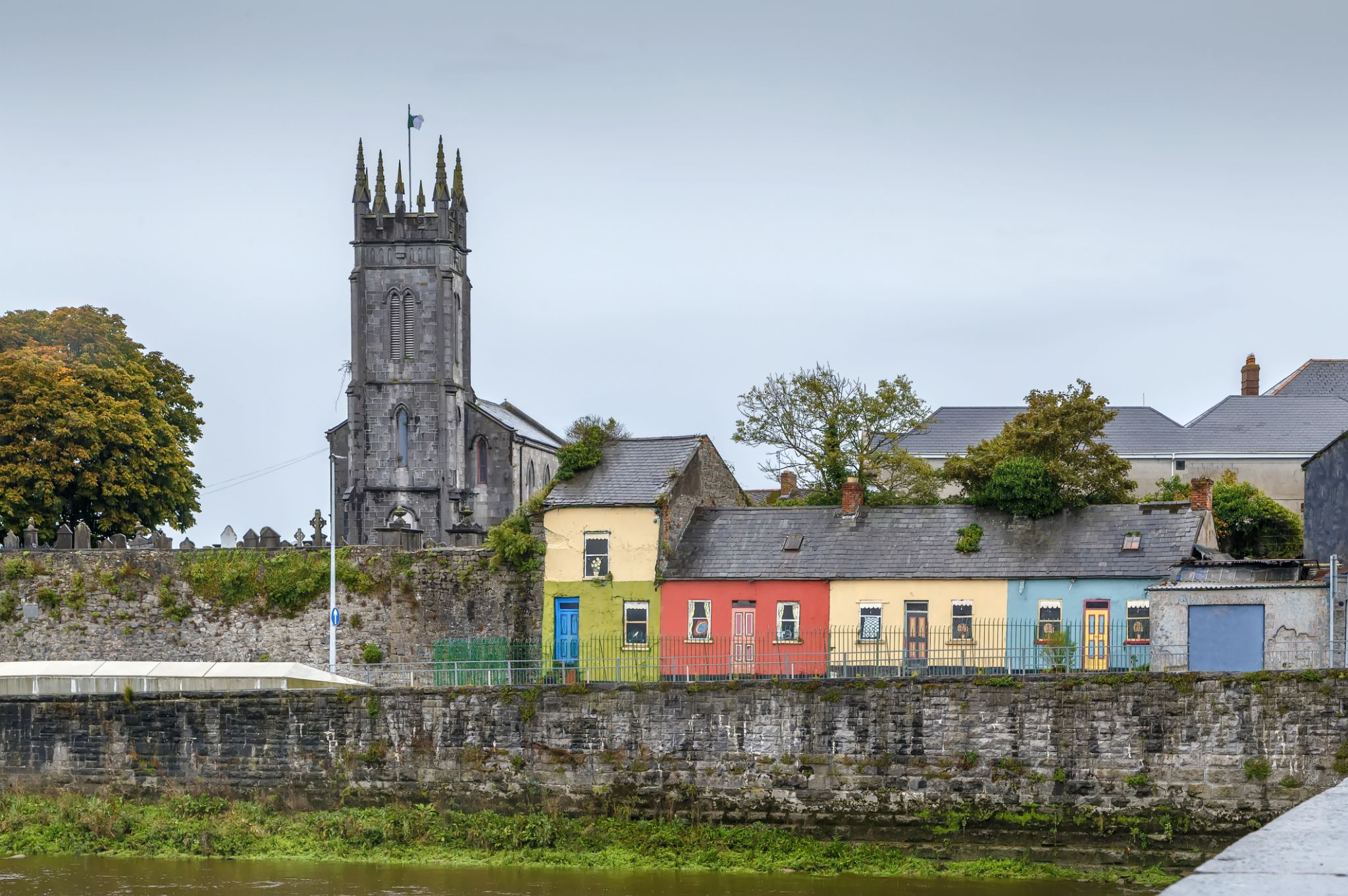
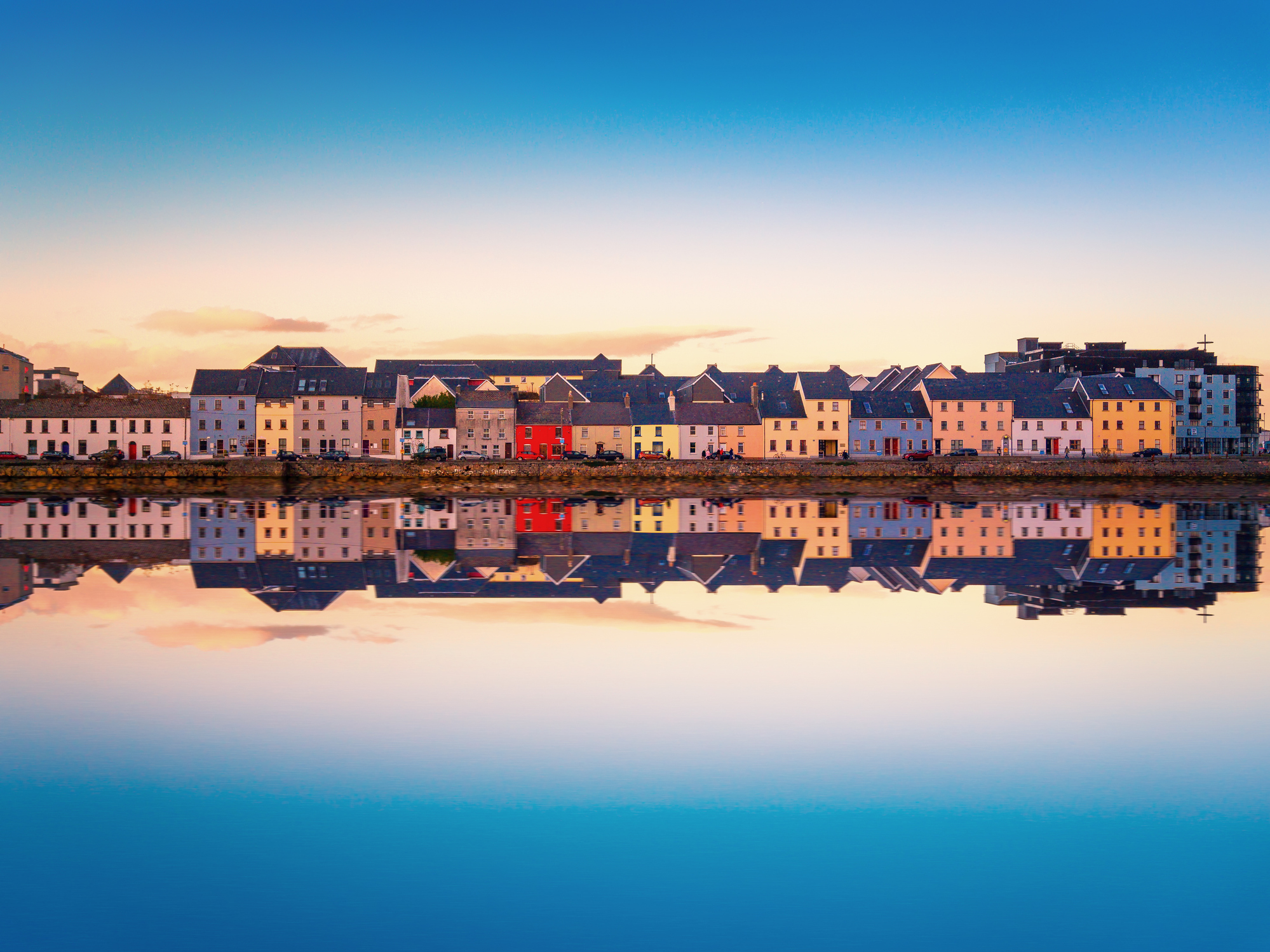

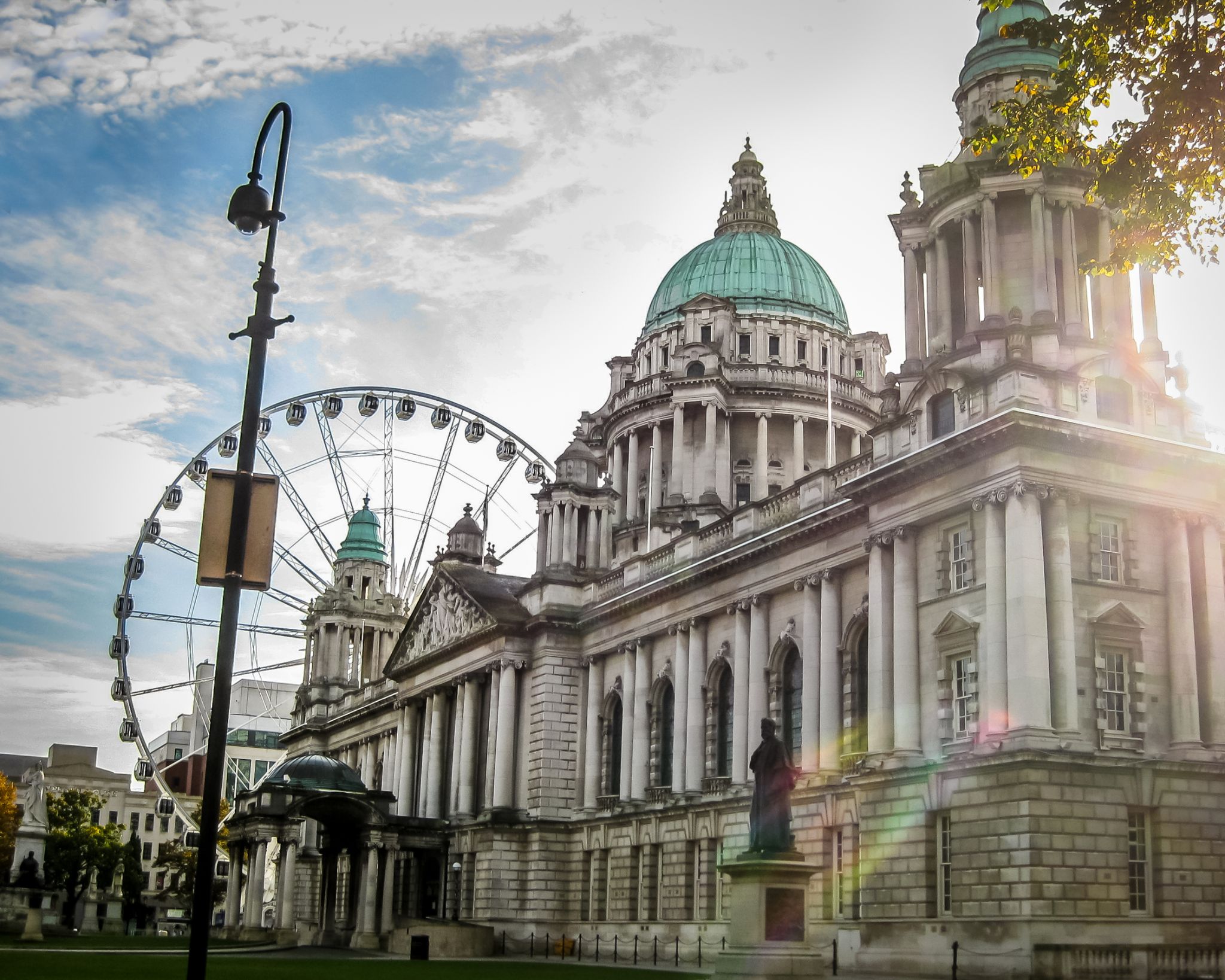
Belfast is a port city in the United Kingdom and the capital city of Northern Ireland, on the banks of the River Lagan on the east coast of Ireland. It is the largest city in Northern Ireland and second largest on the island of Ireland. It had a population of 333,871 in 2015.
By the early 1800s Belfast was a major port. It played a key role in the Industrial Revolution, becoming the biggest linen producer in the world, earning it the nickname "Linenopolis". By the time it was granted city status in 1888, it was a major centre of Irish linen production, tobacco-processing and rope-making. Shipbuilding was also a key industry; the Harland and Wolff shipyard, where the RMS Titanic was built, was the world's biggest shipyard. It also has a major aerospace and missiles industry. Industrialisation and the inward migration it brought made Belfast Ireland's biggest city and it became the capital of Northern Ireland following the Partition of Ireland in 1922. Its status as a global industrial centre ended in the decades after the Second World War.
Belfast suffered greatly in the Troubles, and in the 1970s and 1980s was one of the world's most dangerous cities. However, the city is now considered to be one of the safest within the United Kingdom. Throughout the 21st century, the city has seen a sustained period of calm, free from the intense political violence of former years and has benefitted from substantial economic and commercial growth. Belfast remains a centre for industry, as well as the arts, higher education, business, and law, and is the economic engine of Northern Ireland. Belfast is still a major port, with commercial and industrial docks dominating the Belfast Lough shoreline, including the Harland and Wolff shipyard. It is served by two airports: George Best Belfast City Airport, and Belfast International Airport 15 miles (24 km) west of the city. It is listed by the Globalization and World Cities Research Network (GaWC) as a Gamma global city.

Belfast is a port city in the United Kingdom and the capital city of Northern Ireland, on the banks of the River Lagan on the east coast of Ireland. It is the largest city in Northern Ireland and second largest on the island of Ireland. It had a population of 333,871 in 2015.
By the early 1800s Belfast was a major port. It played a key role in the Industrial Revolution, becoming the biggest linen producer in the world, earning it the nickname "Linenopolis". By the time it was granted city status in 1888, it was a major centre of Irish linen production, tobacco-processing and rope-making. Shipbuilding was also a key industry; the Harland and Wolff shipyard, where the RMS Titanic was built, was the world's biggest shipyard. It also has a major aerospace and missiles industry. Industrialisation and the inward migration it brought made Belfast Ireland's biggest city and it became the capital of Northern Ireland following the Partition of Ireland in 1922. Its status as a global industrial centre ended in the decades after the Second World War.
Belfast suffered greatly in the Troubles, and in the 1970s and 1980s was one of the world's most dangerous cities. However, the city is now considered to be one of the safest within the United Kingdom. Throughout the 21st century, the city has seen a sustained period of calm, free from the intense political violence of former years and has benefitted from substantial economic and commercial growth. Belfast remains a centre for industry, as well as the arts, higher education, business, and law, and is the economic engine of Northern Ireland. Belfast is still a major port, with commercial and industrial docks dominating the Belfast Lough shoreline, including the Harland and Wolff shipyard. It is served by two airports: George Best Belfast City Airport, and Belfast International Airport 15 miles (24 km) west of the city. It is listed by the Globalization and World Cities Research Network (GaWC) as a Gamma global city.


